Backpacking Vietnam is an explosion for the senses, a unique journey through a land unlike any other in Southeast Asia. The vibrant colors, the iconic lanterns, and the welcoming smiles of its people leave an indelible mark. It’s a country packed with contrasts: serene rice paddies and wandering buffalo coexist with buzzing cities fueled by countless motorbikes and fast internet.
This land offers something for every adventurer. You can lose yourself for weeks exploring remote jungles and traditional villages, or dive into the dynamic energy of bustling metropolises. Vietnam has leapfrogged into the 21st century, yet much of its timeless countryside remains untouched, a beautiful balance that makes it a truly fascinating destination for The Broke Backpacker Vietnam seeking deep experiences on a budget.
Prepare for your taste buds to embark on their own adventure. Vietnamese street food is not just delicious; it’s incredibly budget-friendly and endlessly fascinating. From a simple, perfect Banh Mi to savory Bun Cha, the flavors are bold and unforgettable. This guide is designed to share all the wisdom gathered from my travels, providing you with everything needed for an epic backpacking trip, from must-see spots to essential practicalities like sorting insurance.
Let’s delve into the heart of Vietnam and equip you with the knowledge to make the most of your journey.
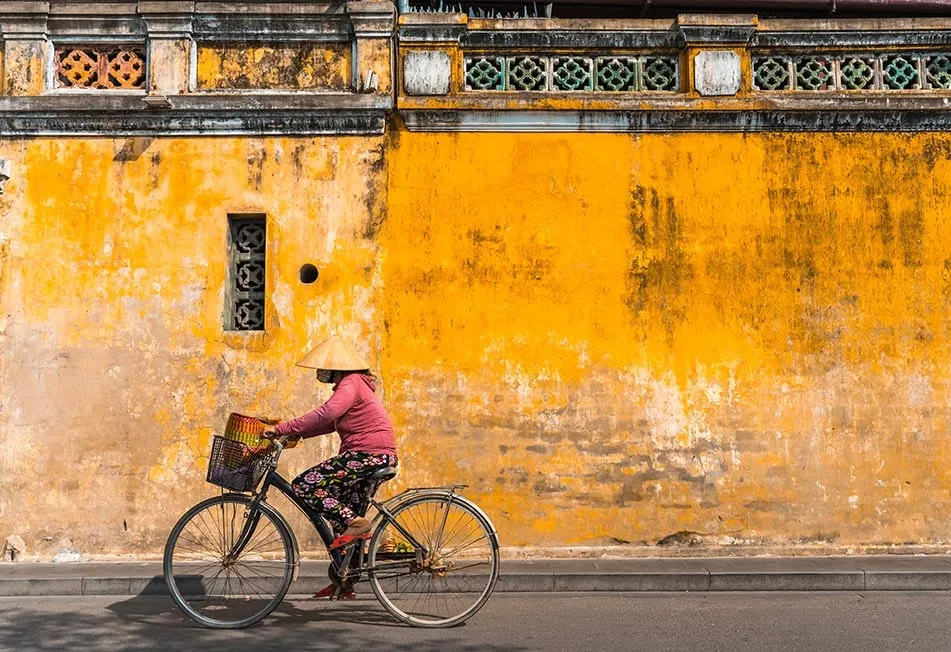 A backpacker on a motorbike wearing a conical hat in a rural Vietnamese village, symbolizing authentic travel and adventure for The Broke Backpacker Vietnam.Classic Vietnam!
A backpacker on a motorbike wearing a conical hat in a rural Vietnamese village, symbolizing authentic travel and adventure for The Broke Backpacker Vietnam.Classic Vietnam!
Why Go Backpacking in Vietnam?
Travelling Vietnam incorporates many elements of the classic backpacking Southeast Asia experience: stunning landscapes, from rolling highlands and steaming jungles to sparkling coastlines and ancient wonders. You can still find that spontaneous energy of waking up in an unfamiliar city after a night out. Yet, Vietnam also demands a certain level of maturity and reflection.
The country’s history is deeply ingrained in the landscape and consciousness. Mountains still bear the scars of intensive bombing from the 1960s and 70s war. Vietnam only truly opened up to tourism in the 1990s, and while popular, it hasn’t been overrun by the same extent of mass-produced tours as some neighbors. This lends a more authentic feel to the journey.
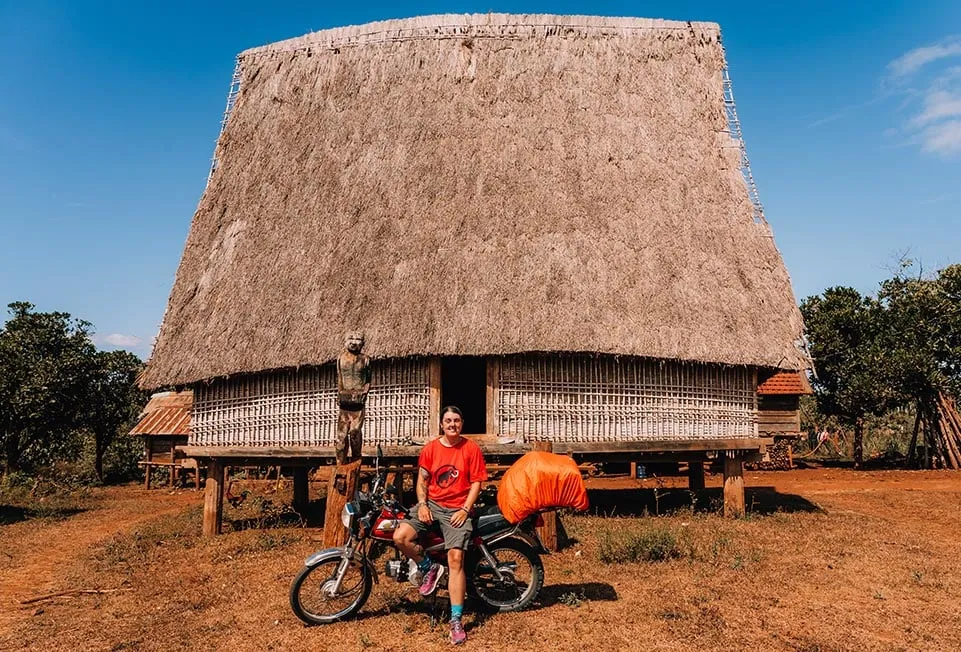 Exploring off the beaten track in a rural Vietnamese village on a motorbike, highlighting adventurous travel.Getting off the beaten track is easy
Exploring off the beaten track in a rural Vietnamese village on a motorbike, highlighting adventurous travel.Getting off the beaten track is easy
Planning Your travel to las vegas nevada
Plan Your Perfect Mackinac Island Vacation – Your Essential Guide
Exploring Cities In Las Vegas – Uncovering Nearby Wonders 2025
Crucially for The Broke Backpacker Vietnam, travel here is incredibly affordable. The cuisine is sublime, the cities offer a vibrant blend of metropolis and charming chaos, and the mountains are simply breathtaking. It’s become a popular base for English teachers, digital nomads, and seasoned expat travelers due to this combination of affordability and appeal.
Vietnam presents a compelling collision of worlds. One day you might be welcomed into a remote village seemingly untouched by time, and the next, you’re navigating dynamic urban centers. This makes it a perfect backpacking destination, offering both profound cultural immersion and modern conveniences. Vietnam is a world away for many backpackers and often stands out as a highlight of their Southeast Asian adventures.
Best Travel Itineraries for Backpacking Vietnam
Below are suggested itineraries, starting with the grand tour. This is ideal if you have three weeks or more, best explored by motorbike or bus. If your time is limited to two weeks, you can focus on either the northern or southern half of the country.
Vietnam is traditionally divided into north and south, each offering distinct experiences. Deciding on where to stay in Vietnam and which region suits you best can be a challenge.
With less than two weeks, concentrating on one region is recommended. Another option is combining a trip through Southern Vietnam with a visit to neighboring Cambodia.
2-Week Travel Itinerary for Vietnam: The Quick Trip
This itinerary is perfect for a two-week adventure, easily navigated by bus. Starting in the north, you’ll fly into Hanoi, a city that’s a fascinating mix of ancient and modern. Be sure to explore the Temple of Literature, Vietnam’s first university, for a glimpse into history and stunning architecture.
After a few days in Hanoi, head south along the coast to Hue, the former imperial capital. This is where my appreciation for Vietnamese food reached new heights – Bun Bo Hue is a must-try. From Hue, it’s a short journey to the picturesque city of Hoi An.
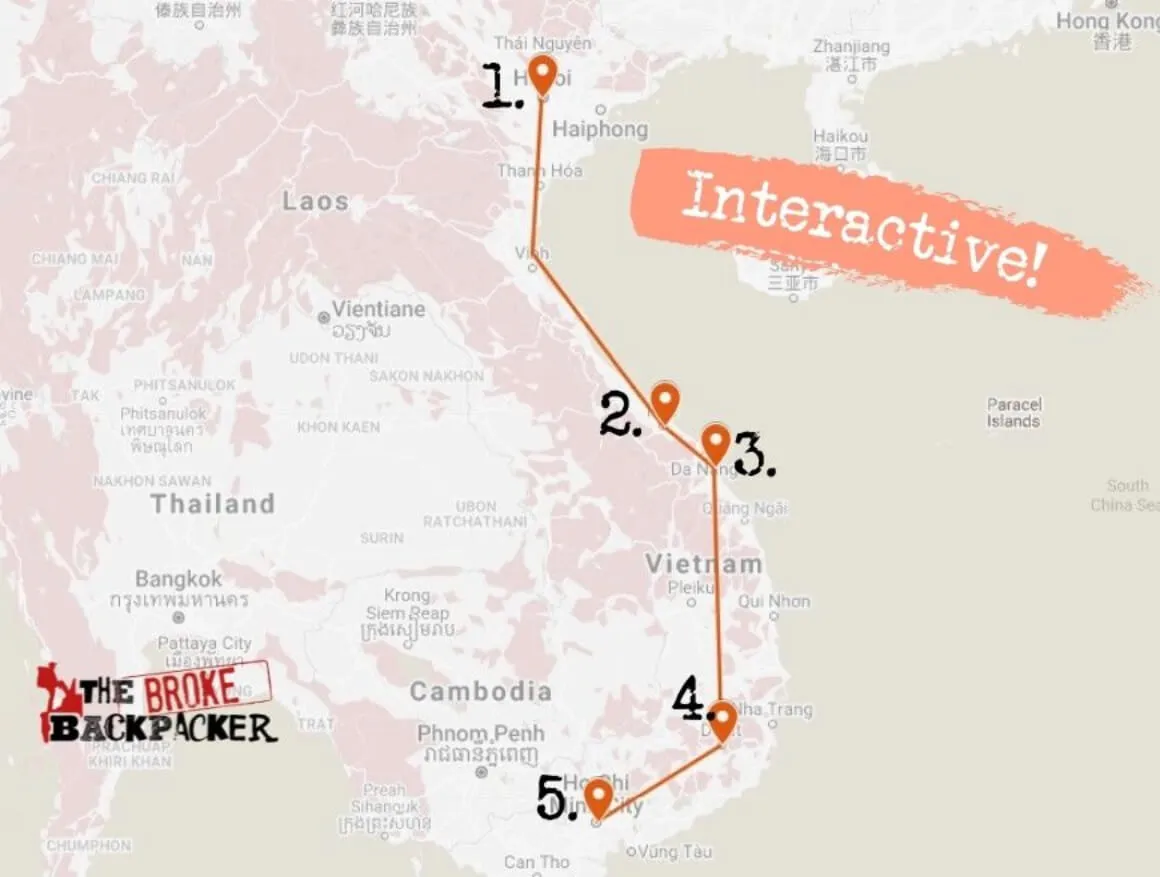
Hanoi => Hue => Hoi An => Da Lat => Ho Chi Minh
Hoi An offers a slower pace, ideal for relaxing, wandering its charming streets, and indulging in some market shopping. The laid-back atmosphere continues in Da Lat, a city best approached with a scenic motorbike ride through the surrounding mountains. Conclude your trip in the bustling metropolis of Ho Chi Minh City (Saigon). This itinerary packs the essence of Vietnam into a concise two-week package.
1-Month Travel Itinerary for Vietnam: The Grand Tour
This comprehensive itinerary requires a minimum of four weeks, ideally longer. Starting in the north, begin your adventure in Hanoi, Vietnam’s dynamic capital. Take a side trip to the mountainous region of Sapa, known for its stunning rice terraces and opportunities for motorbike exploration and waterfall visits. Next, organize a trip to Halong Bay, a UNESCO World Heritage site and an absolute highlight of any Vietnam trip, famous for its dramatic limestone karsts.
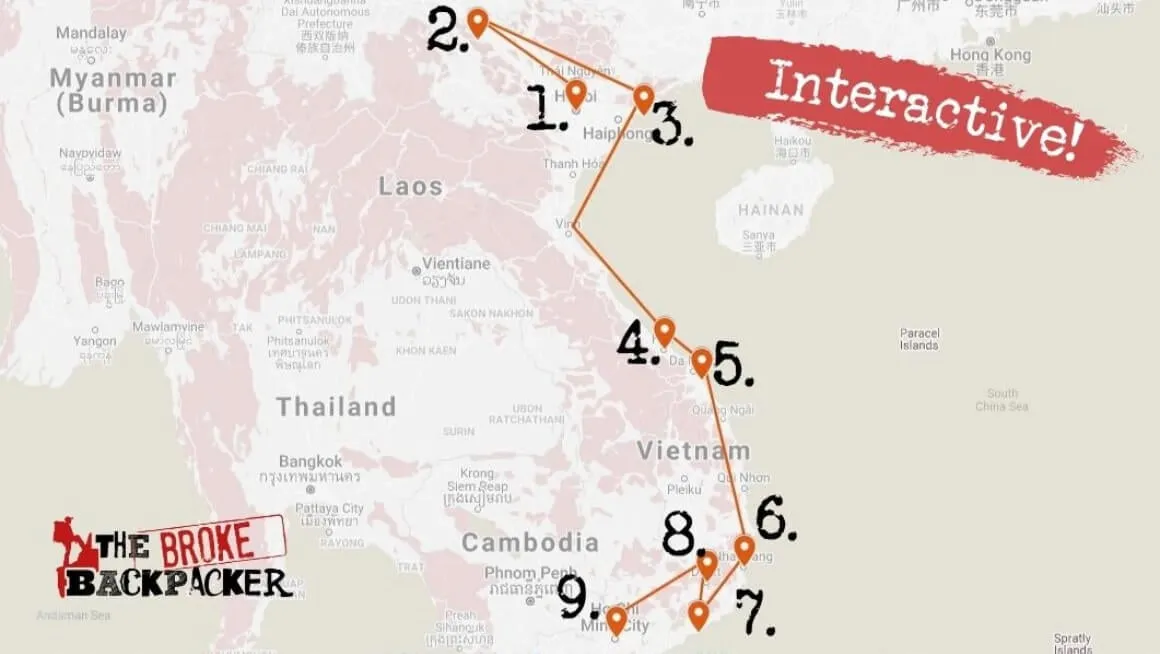
You’ll need a minimum of 4 weeks to do this properly (but ideally longer)!
Head south, stopping to stay in the town of Hue to explore its imperial history. Continue to Hoi An, renowned for its skilled tailors where you can get quality, affordable custom clothing. Next, visit Nha Trang for water sports and seaside fun, offering adrenaline-pumping activities like windsurfing and jet skiing.
Travel to Mui Ne, known for its unique sand dunes, before heading inland for a short stay in Da Lat, a tranquil mountain city. Finish your tour in Saigon (Ho Chi Minh City), a chaotic yet captivating urban hub that serves as a common starting or ending point for backpackers. From Saigon, you can also arrange a trip to explore the wildlife paradise of the Mekong River Delta.
Best Places to Visit in Vietnam
As highlighted for The Broke Backpacker Vietnam, this country offers a unique blend of experiences. Some cities retain an old-world Asian charm, others show strong French colonial influences, and some are lively hubs for travelers. Vietnamese cities are among my favorites globally, thanks to the intriguing mix of modern infrastructure and traditional street life.
There’s a vast amount to discover, and while I can share my top recommendations, you’re bound to find your own hidden gems. Everywhere you go, you’ll find vibrant colors and the comforting aroma of pho.
Backpacking Hanoi
Hanoi stands out as one of my favorite cities in Asia, beautifully merging the old with the new. It’s the perfect starting point for exploring the majestic northern mountains and stunning scenery, as well as the warm southern beaches and bustling cities. Allocate at least a couple of days to explore Hanoi, whether on foot or by bicycle, absorbing its unique atmosphere. Many travelers even fall in love and decide to call Hanoi home.
A must-visit is the War Museum, easily recognizable by the weaponry displayed at its entrance. For just around $3, it provides a sobering introduction to Vietnam’s recent history. The Old Quarter is quintessential Hanoi, with its labyrinthine streets, endless motorbikes moving like schools of fish, and some of the best noodles you’ll ever taste.
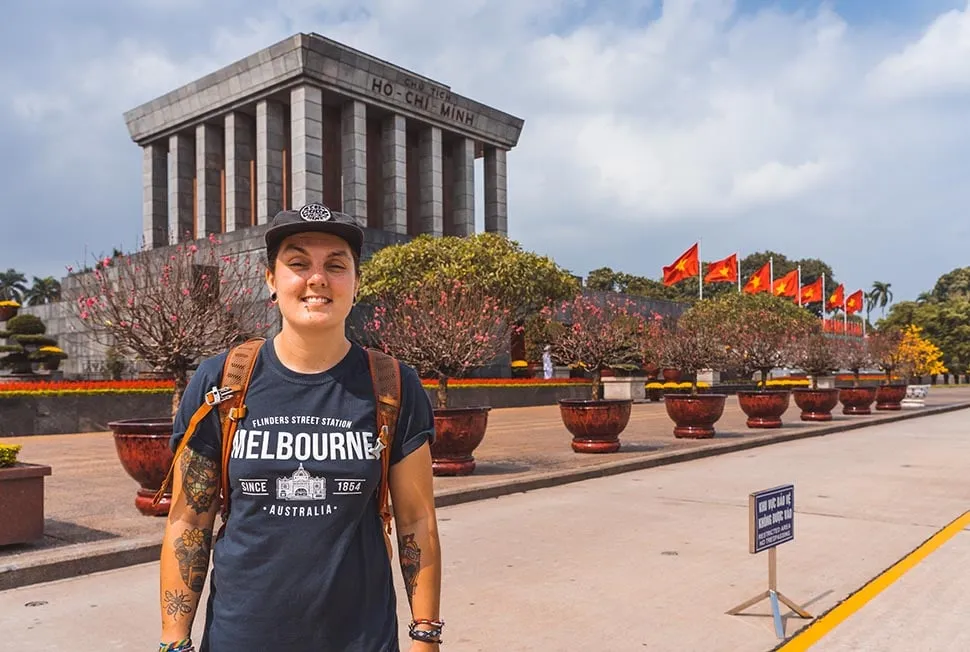 Chaotic motorbike traffic in Hanoi’s Old Quarter, illustrating the vibrant city life for backpackers in Vietnam.Hanoi is a fun city with lots to do
Chaotic motorbike traffic in Hanoi’s Old Quarter, illustrating the vibrant city life for backpackers in Vietnam.Hanoi is a fun city with lots to do
My personal favorite places to visit in Hanoi? Beyond the street carts serving banh mi into the early hours, the Temple of Literature is exceptional. Founded in 1070, it was Vietnam’s first university, a place of learning for the elite. Its intricate architecture is truly breathtaking, even if history isn’t your primary interest. If you’re up for more temples, visit Bach Ma Temple in the Old Quarter, the city’s oldest. If you only see one temple while backpacking through Hanoi, this should be it.
Hoan Kiem Lake, or the ‘Lake of the Restored Sword’, is steeped in legend. The story says a giant golden turtle retrieved a magical sword from the Emperor after he defeated the Chinese and returned it to the lake. Traffic is banned around the lake from Friday to Sunday evenings, transforming it into a lively meeting place with a festive atmosphere. Early risers can join the 6 am Tai Chi sessions.
Hanoi is a central hub for backpackers, often the starting or ending point for cross-country journeys. It’s a popular spot for buying and selling motorbikes among travelers. This creates a contagious, energetic vibe in the hostels, where you can swap stories and tips with those just arriving, staying long-term, or moving on. It’s a fantastic place to connect.
Book Your Hanoi Hostel Here Or Book an Epic Airbnb
Do your research for a killer trip to Hanoi!
Read about what to do in Hanoi.
Schedule lovers, plan your itinerary for Hanoi!
Check out where to stay in Hanoi!
And Hanoi’s coolest hostels.
Backpacking Sapa
Sapa is a paradise for explorers, known for its stunning mountainous landscapes and ethnic minority communities. You’ll likely arrive early in the morning. Check into one of the awesome hostels in Sapa, drop your bags, and immediately look for motorbikes for hire. At around $10 a day, it’s an affordable way to gain freedom here.
Exploring the beautiful countryside by motorbike is one of the many adventurous things to do in Sapa. Ride to the magnificent Thac Bac Waterfall, located about 15kms from Sapa town. Legend has it that if you gaze long enough, you might see a white dragon peering into the valley.
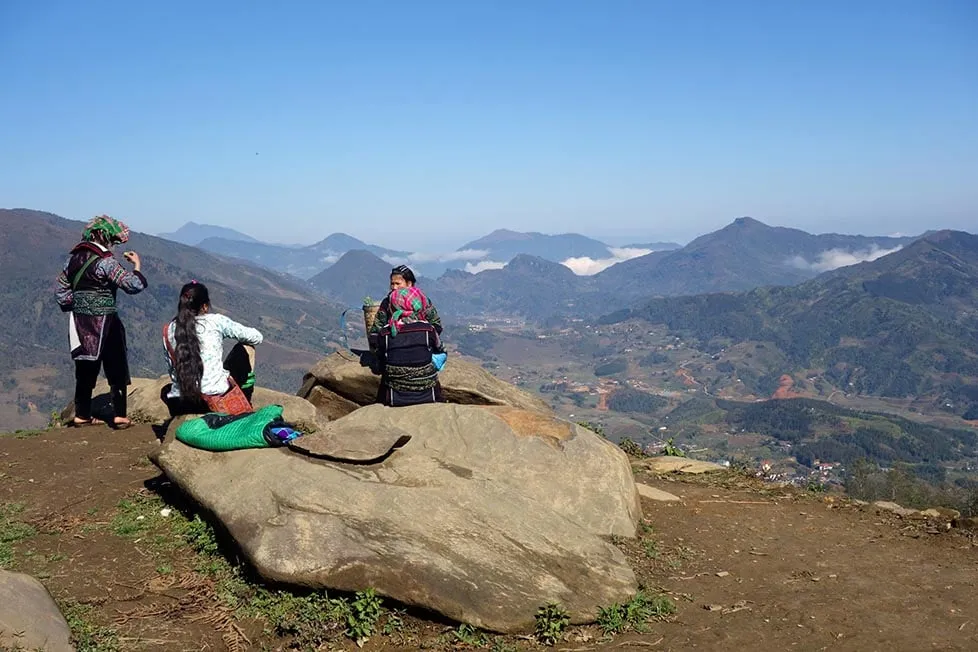 A group hiking with local villagers through terraced rice paddies in Sapa, Vietnam.Hiking with villagers in Sapa
A group hiking with local villagers through terraced rice paddies in Sapa, Vietnam.Hiking with villagers in Sapa
To truly get off the beaten track while backpacking Vietnam, take a day trip to the incredible Ban Pho Village. Home to the friendly Mongolian Ban Ha tribe, this village is settled precariously on a mountainside cliff. Immerse yourself in their culture, chat with the locals, and be prepared to sample their legendary corn wine – they are very hospitable and will insist!
If motorbikes aren’t your preference, the Sapa Valley is also fantastic to explore by bicycle. Many companies offer tours covering food and transport, but it’s also easy to organize your own route. There are numerous amazing treks around Sapa, offering experiences that could fill days or even a lifetime. For the truly adventurous, consider conquering Fansipan, Vietnam’s highest peak. While not Everest, its 3,143m height is impressive. It can be done in a challenging day, but a 2-day trek is often recommended, either solo or with a local guide.
Book Your Sapa Hostel Here Or Book an Epic Airbnb
Backpacking Ha Giang
For those seeking even more adventure, the treks around Ha Giang or, better yet, motorbiking the Ha Giang Loop are highly recommended. This region is one of Vietnam’s most stunning and attracts significantly fewer Western tourists than Sapa, making it perfect for The Broke Backpacker Vietnam seeking raw adventure.
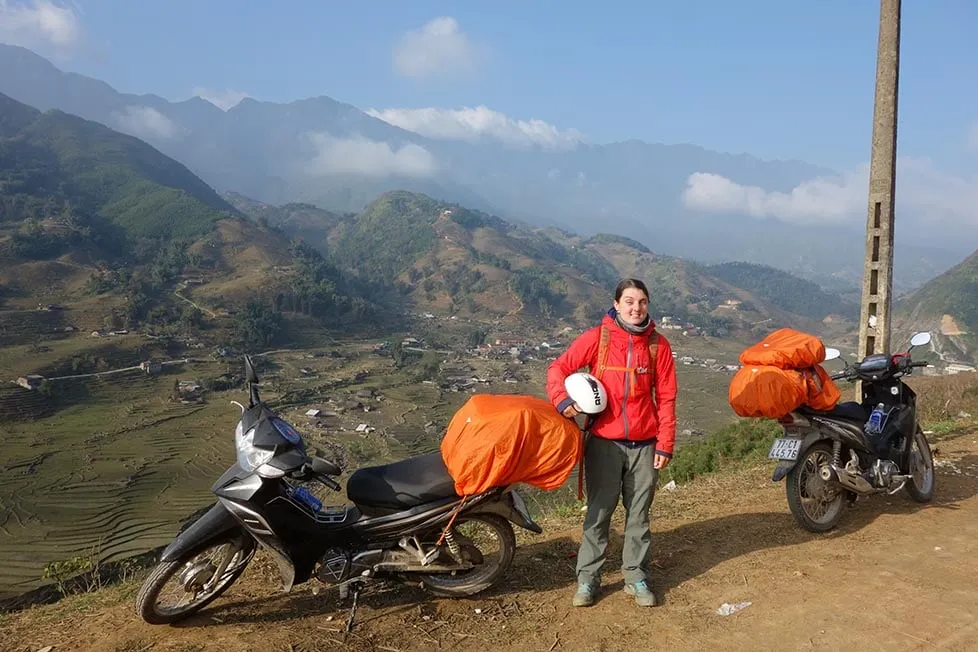 Riding a motorbike along a scenic mountain road on the Ha Giang Loop, Vietnam.Motorbiking through some amazing scenery
Riding a motorbike along a scenic mountain road on the Ha Giang Loop, Vietnam.Motorbiking through some amazing scenery
Though its popularity is growing, Ha Giang still holds many hidden gems, such as the remote Na Hang lake. This area offers abundant opportunities for true exploration and adventure travel.
When looking for accommodation, check out Hmong Moonshine for a beautiful property and friendly hosts (ask for Tuyen). You can even learn to make local moonshine here. Be warned, my attempt resulted in being happily drunk under the table by a Vietnamese grandma – their tolerance is legendary!
Book Your Ha Giang Hostel Here Book an Epic Homestay Here
Backpacking Halong Bay & Cat Ba Island
This UNESCO World Heritage site, often called the Eighth Wonder of the World, is an essential stop when backpacking Vietnam. Most visitors experience Halong Bay as part of a pre-arranged package, which is the most practical way to see it. The tours are generally affordable and well worth the cost for the breathtaking scenery.
It’s recommended to pre-book your trip and accommodation in Halong Bay. I booked a two-day, two-night tour through the Central Hanoi Backpackers Hostel, which included accommodation on a “Junk Boat” one night and in beach huts on Cat Ba Island the other.
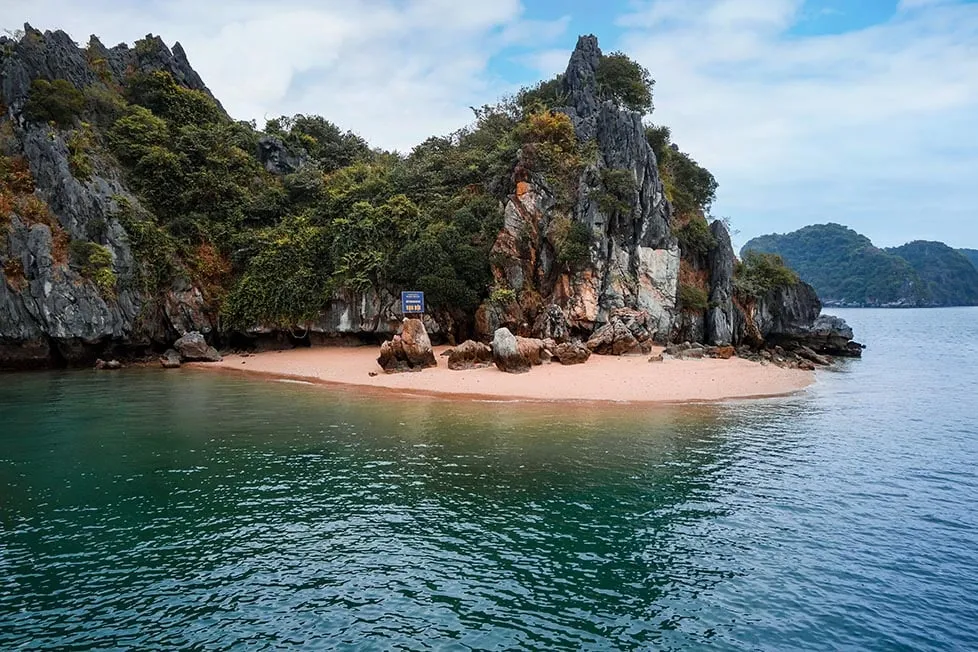 A stunning view of limestone karsts in Ha Long Bay from a beach, showcasing the beautiful landscape.Ha Long Bay is like a dream
A stunning view of limestone karsts in Ha Long Bay from a beach, showcasing the beautiful landscape.Ha Long Bay is like a dream
Being part of a package tour covered all food, transport, and activities, making it a hassle-free adventure. After the tour, you can either extend your stay on Cat Ba Island to explore the rock climbing scene or return to Hanoi before heading south.
Book Your Cat Ba Island Hostel Here
Backpacking Hue
Hue is a beautiful, smaller town that offers a great break in the journey between Hanoi and Hoi An. As a former royal capital, it’s rich in impressive historic sights that will appeal to history enthusiasts.
You’ll find many cool backpacker hostels in Hue with a lively traveler atmosphere. It’s one of those places where it’s easy to linger, enjoying the slower pace compared to Vietnam’s larger cities.
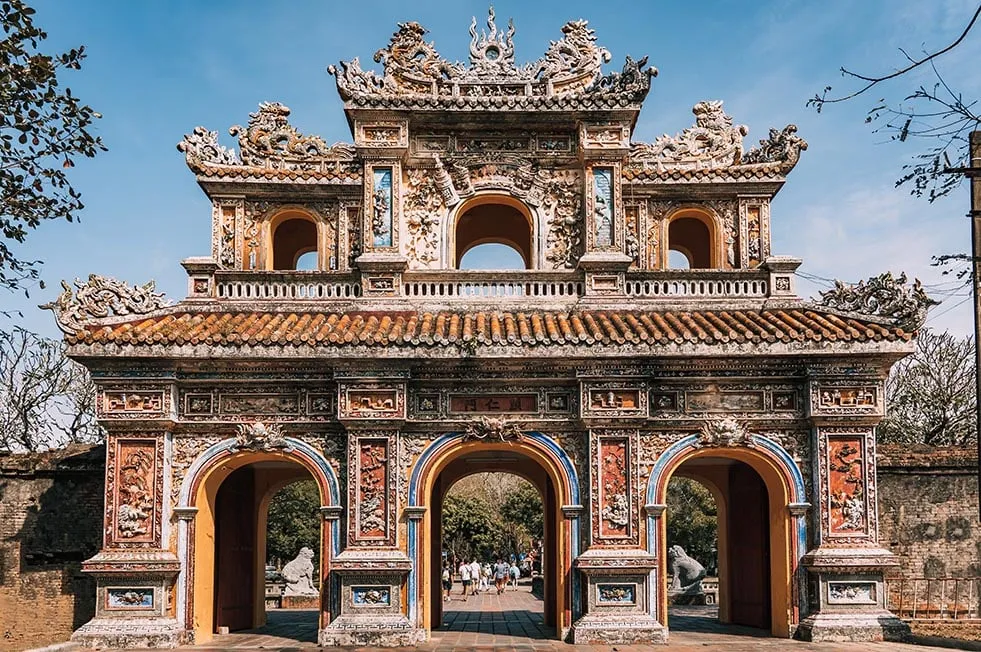 An ornate historical gateway at the Citadel in Hue, Vietnam.That’s some ornate gateway right there!
An ornate historical gateway at the Citadel in Hue, Vietnam.That’s some ornate gateway right there!
Explore the magnificent Citadel, located across the Perfume River. This extensive historical complex comprises four separate citadels and requires a full day to explore, making bike hire a good option. There are tons of things to do in Hue, and you could easily spend weeks here. Don’t miss the Thien Mu Pagoda, a spectacular 21-meter-high structure with breathtaking architecture.
If relaxation is what you seek, the beaches of Lang Co and the mineral hot pools of Phong An are just a short distance away.
Book Your Hue Hostel Here Or Book an Epic Airbnb
Backpacking Hoi An
Hoi An is the go-to destination for getting tailor-made clothes while backpacking Vietnam. While there are many other things to do, most backpackers visiting Hoi An come specifically for custom suits or dresses.
Tailoring typically takes at least three days, so get measured as soon as you arrive. Finding a tailor should be your first stop.
![]() The iconic Japanese Bridge illuminated at night in Hoi An, Vietnam.The Japanese Bridge in Hoi An
The iconic Japanese Bridge illuminated at night in Hoi An, Vietnam.The Japanese Bridge in Hoi An
Check into Mad Monkey Hoi An – dorms start from $7 USD per night, and it boasts a fantastic pool. Spend a few days exploring the local area by bicycle, which the hostel often provides for free. Its proximity to the beach is a big plus on hot days.
For a change of scene, Da Nang is a great day trip, just a 40-minute drive away. Its sandy beaches, caves, and Buddhist shrines offer plenty of activities. If you’re on a tighter budget, consider staying in Da Nang instead of Hoi An itself, as accommodation can be cheaper.
Book Your Hoi An Hostel Here Or Book an Epic Airbnb
Before backpacking through Hoi An, prep!
Check out the best things to do in Hoi An!
And then plan your itinerary for Hoi An.
Choose which neighbourhood in Hoi An is best!
Or book into one of Hoi An’s best hostels.
Backpacking Nha Trang
Nha Trang is an excellent place to unwind, enjoy the coast, and dive into water-based fun. It’s a popular spot for water sports enthusiasts, offering windsurfing, paragliding, and jet skiing. You can easily arrange these activities directly from the beach without pre-booking.
The best area to stay in Nha Trang for backpackers is typically down the side alleys off the main road. These areas are quieter, more affordable, and have a more relaxed atmosphere.
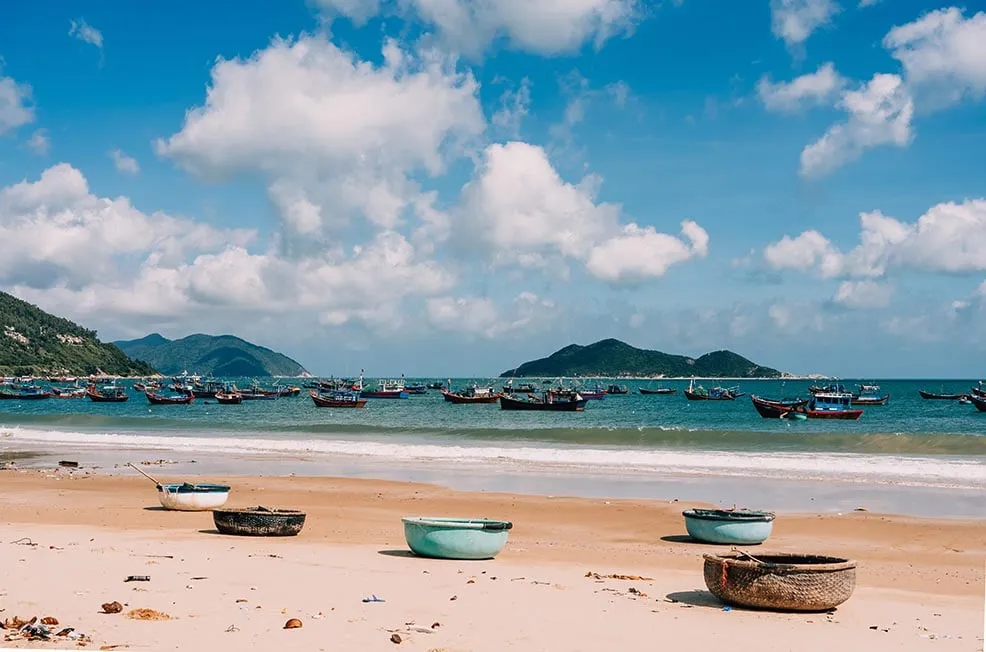 A sandy beach and palm trees along the coastline of Nha Trang, Vietnam.There are some incredible beaches around Vietnam
A sandy beach and palm trees along the coastline of Nha Trang, Vietnam.There are some incredible beaches around Vietnam
An intriguing aspect of Nha Trang is its popularity among wealthy Russian tourists, creating an unexpected cultural mix. While there are great backpacker hostels in Nha Trang with strong social vibes and beautiful beaches offering a laid-back backpacker life, some bars can feel a bit sketchy, so it’s wise to stay aware of your surroundings.
Nha Trang has a peculiar atmosphere that’s hard to pinpoint, which for me, added to its appeal. It’s partly due to rumors and realities of certain underground activities contrasting with its picturesque exterior.
Despite some potential downsides, Nha Trang is one of those interesting places you’ll likely be glad you experienced, even if you’re also a little relieved to move on afterwards.
Book Your Nha Trang Hostel Here Or Book an Epic Airbnb
Backpacking Lak Lake
To recover from the potentially lively nights in Nha Trang and break up the journey to Dalat, consider venturing to the serene and beautiful Lak Lake. It’s the largest natural lake in central Vietnam and offers a peaceful retreat.
This region is home to the Mnong people, an indigenous ethnic group known for their unique culture. Curiously, they are credited with designing one of the world’s oldest instruments, the lithophone.
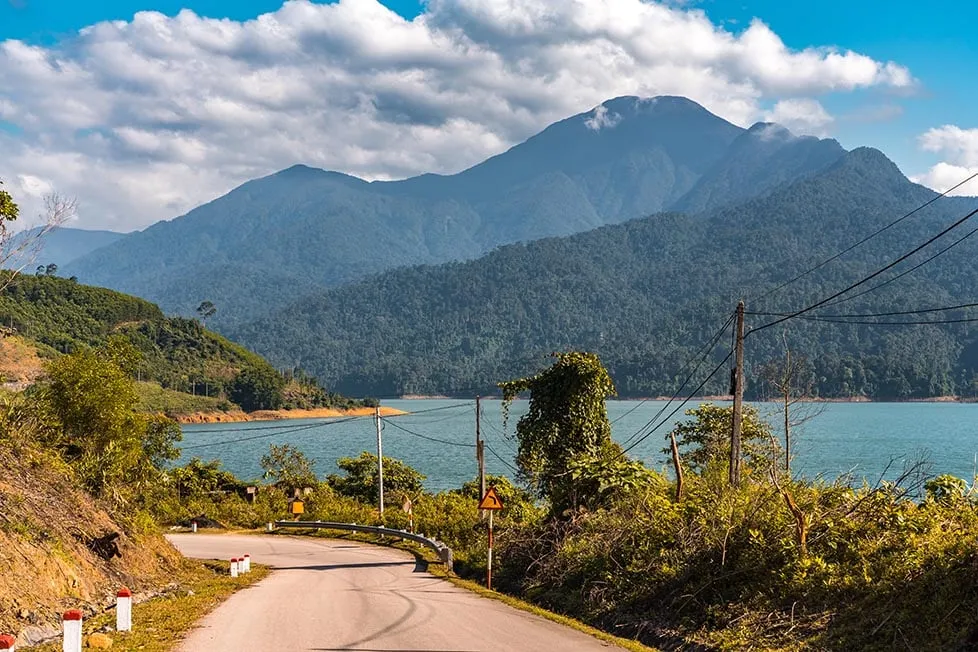 A person paddling a traditional wooden boat on a tranquil lake with mountains in the background in Vietnam.Vietnam also has some wonderful lakes to visit too
A person paddling a traditional wooden boat on a tranquil lake with mountains in the background in Vietnam.Vietnam also has some wonderful lakes to visit too
Enjoy the still waters and scenery by paddling out in a kayak at sunset. You can also explore Jun Village, a Mnong settlement with distinctive wooden stilted houses. Lak Lake is a truly beautiful place to visit in Vietnam and offers a welcome departure from the main tourist path.
Backpacking Mui Ne
From Nha Trang, head to Mui Ne, home to one of the best beaches in Vietnam. The main attractions are the incredible sand dunes. You can also hire a motorbike from Easy Rider for around $30 and take a scenic ride up the mountain paths towards Dalat.
 Vast red sand dunes in Mui Ne, Vietnam.Mui Ne is a unique place
Vast red sand dunes in Mui Ne, Vietnam.Mui Ne is a unique place
Beyond the sand dunes, beaches, and a fairy stream, Mui Ne is relatively quiet. Ostrich riding is offered, which might sound exciting but is ethically questionable. I strongly advise against engaging with this type of animal tourism.
Bombing down the sand dunes on a board is plenty of fun on its own without supporting potentially harmful practices.
Book Your Mui Ne Hostel Here Or Book an Epic Airbnb
Backpacking Da Lat (Dalat)
Da Lat itself doesn’t have an extensive list of attractions, but the scenic ride there, particularly from Mui Ne, is stunning. Be aware that the roads can be challenging; I unfortunately crashed and injured myself because I had limited riding experience. If you’re new to motorbiking, I highly recommend hiring a driver and riding on the back.
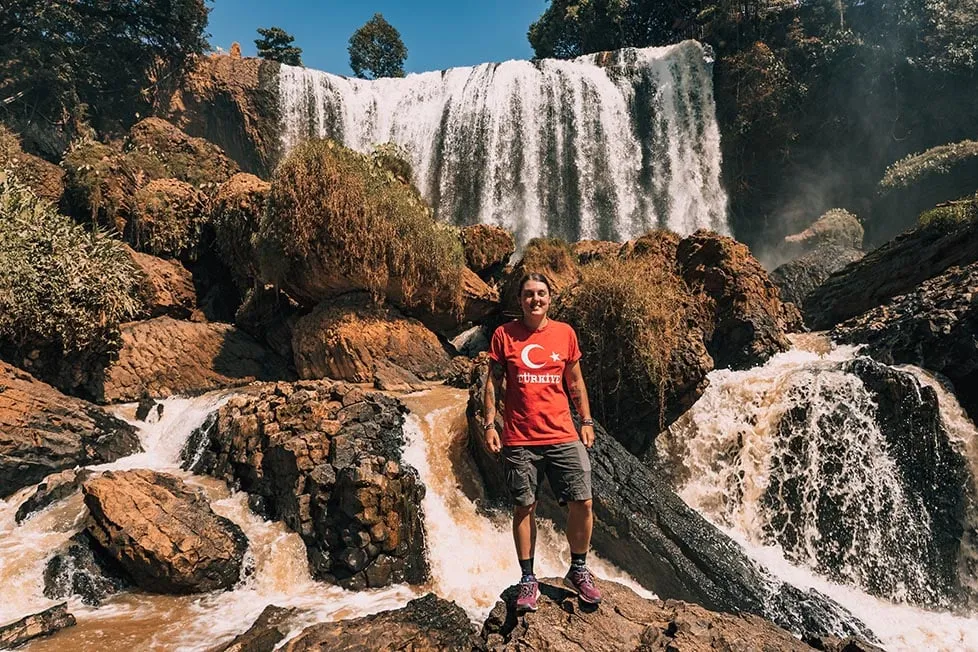 A multi-tiered waterfall surrounded by lush greenery in Da Lat, Vietnam.The waterfalls in Da Lat are something else!
A multi-tiered waterfall surrounded by lush greenery in Da Lat, Vietnam.The waterfalls in Da Lat are something else!
Although less activity-packed than other places, Da Lat offers awesome budget accommodations for backpackers and is a pleasant place to pause and recharge for a few days. It’s an opportunity to experience a quieter side of Vietnam.
I cherished the slower pace in Da Lat. I couchsurfed here and have warm memories of barbecuing octopus and playing hopscotch with local kids late into the evening. It was a simple experience that has become a truly wonderful memory over the years.
Book Your Dalat Hostel Here Or Book an Epic Airbnb
Backpacking Ho Chi Minh (Saigon)
Ho Chi Minh City (formerly Saigon) is often the starting point for visitors and offers a wildly bustling experience. For The Broke Backpacker Vietnam, it can feel slightly more expensive than elsewhere in the country, so exploring the ‘real’ Vietnam beyond the main tourist areas is recommended sooner rather than later.
While there are many cool things to do in Ho Chi Minh, some must-see sights are linked to the history of the Vietnam War. The War Remnants Museum provides a haunting insight into the conflict from 1954-1975 for about $1 entry.
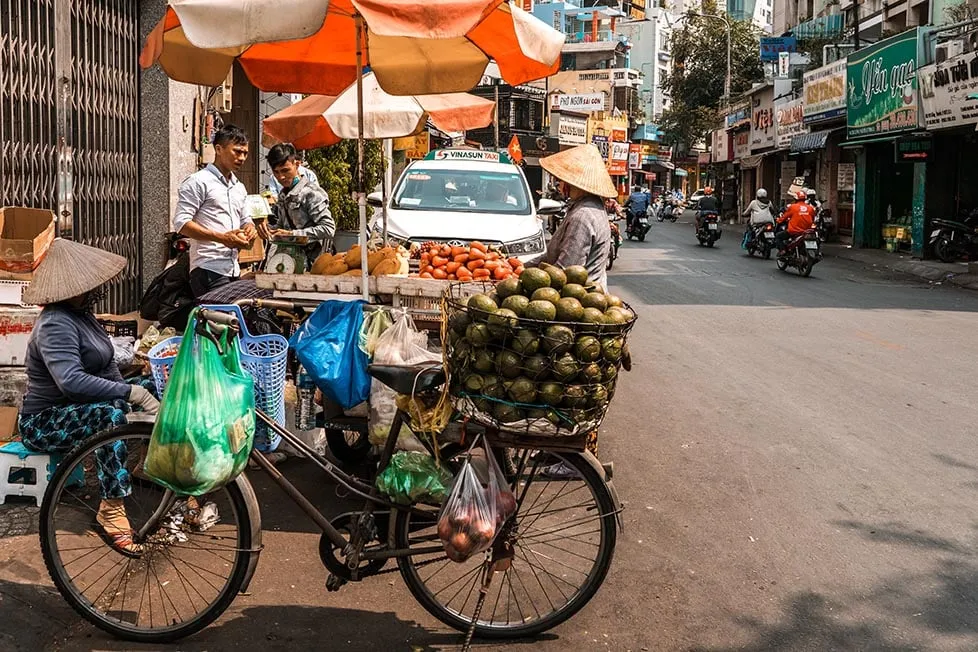 A bustling street food stall in Ho Chi Minh City (Saigon), Vietnam.Join the chaos of Saigon!
A bustling street food stall in Ho Chi Minh City (Saigon), Vietnam.Join the chaos of Saigon!
Take a trip outside the city to tour the incredible network of Cu Chi Tunnels. If you’re not claustrophobic, you can crawl through restored sections to experience the conditions Vietnamese soldiers endured in 1954. Half-day tours can often be booked through hostel travel desks, such as at The Hideout Hostel.
From Ho Chi Minh City, it’s easy to arrange bus travel onwards to Phnom Penh, Cambodia. You can typically obtain your Cambodian visa at the border crossing for a fee.
Book Your Saigon Hostel Here Or Book an Epic Airbnb
Before backpacking through Ho Chi Minh, prep!
Decide where to go in Ho Chi Minh.
And plan an itinerary for Ho Chi Minh!
Read about Ho Chi Minh’s nicest areas to stay.
Or book a night in Ho Chi Minh’s top hostel instead!
Mekong Delta
The Mekong Delta is often called the ‘Rice Bowl’ of Vietnam due to its extensive rice paddies. This vast network of rivers, swamps, and islands is dotted with tiny villages and floating markets. Paddle into the markets to browse for trinkets – you’ll find a huge variety, though increasingly aimed at tourists.
For a different perspective, consider renting a vintage Vespa scooter for a day trip into the Delta countryside to experience local culture.
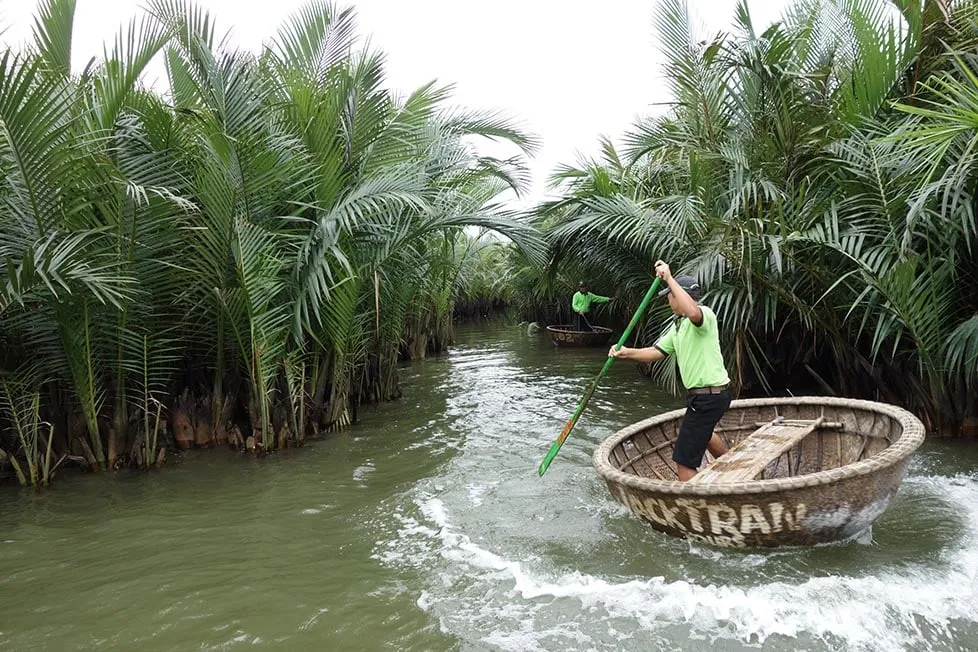 A boat navigating a narrow waterway lined with palm trees in the Mekong Delta, Vietnam.I’d fall out of this boat for sure!
A boat navigating a narrow waterway lined with palm trees in the Mekong Delta, Vietnam.I’d fall out of this boat for sure!
Moving past the more commercialized sections, the Mekong Delta is a haven for local wildlife. The quiet sounds of nature offer a refreshing contrast to the busy streets of Ho Chi Minh City. Trips can range from half a day to several days, depending on your budget and time. I recommend spending at least a full day exploring. The best base for visiting the Mekong Delta is Can Tho, located just south of Ho Chi Minh.
Getting Off the Beaten Path in Vietnam
Vietnam’s popularity is soaring among both backpackers and package holidaymakers. While the main tourist trail is fantastic, there is so much more to discover by venturing off the beaten path.
If you want to see some unreal scenes in the Deep South, check out my guide on where to stay in Phu Quoc!
The Ha-Giang Loop, mentioned earlier, is a prime example. It’s no longer completely unknown but is far from being overly touristy. Undertaking the loop by motorbike offers genuine adventure and closer contact with local communities.
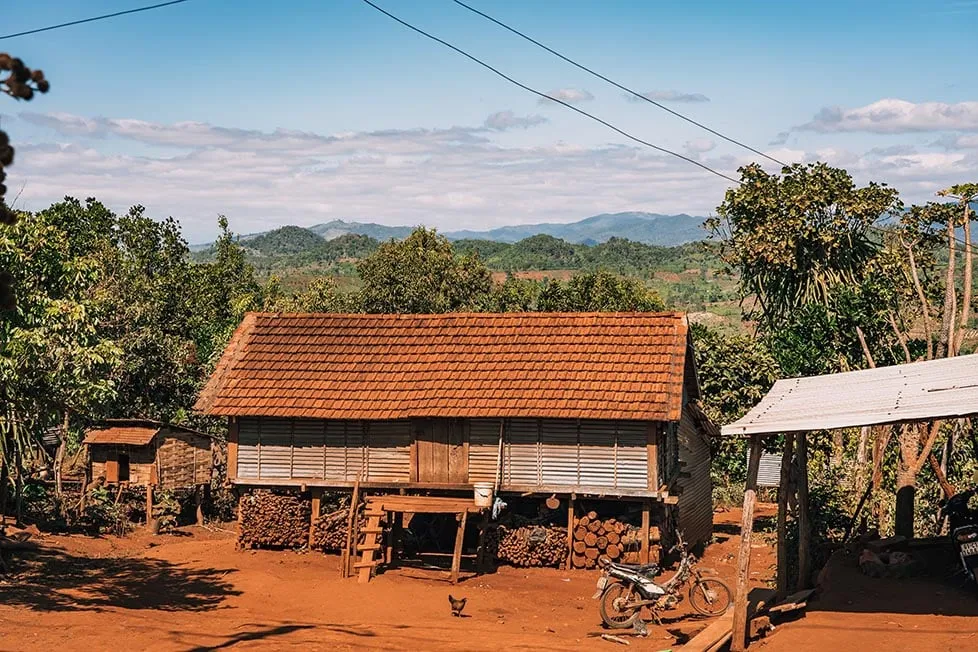 Local children playing in a small village in the Vietnamese countryside.The villages around Vietnam are super cool to experience
Local children playing in a small village in the Vietnamese countryside.The villages around Vietnam are super cool to experience
Furthermore, travelling Vietnam by motorbike, while popular with tourists, provides unparalleled freedom to explore unseen corners of the country. With your own wheels, no village is too remote to reach.
I also suggest the Ta Xua mountain range, near Moc Chau village (another underexplored area). The Ta Xua mountains offer a surreal experience, with trails winding above oceans of clouds, especially stunning at sunrise.
Finally, if you’re packing for a beach day but prefer solitude, Vietnam has many lesser-known beaches. Heading north from Nha Trang along the coast will lead you to great spots like Quy Nhon. If you want even more isolation, rent a bike and simply start exploring the coastline!
Top Things to Do in Vietnam
Vietnam is brimming with incredible activities, catering to both those who enjoy popular attractions and those who prefer the road less traveled. Here are my top picks for the coolest experiences in Vietnam for The Broke Backpacker Vietnam.
1. Cruise Halong Bay
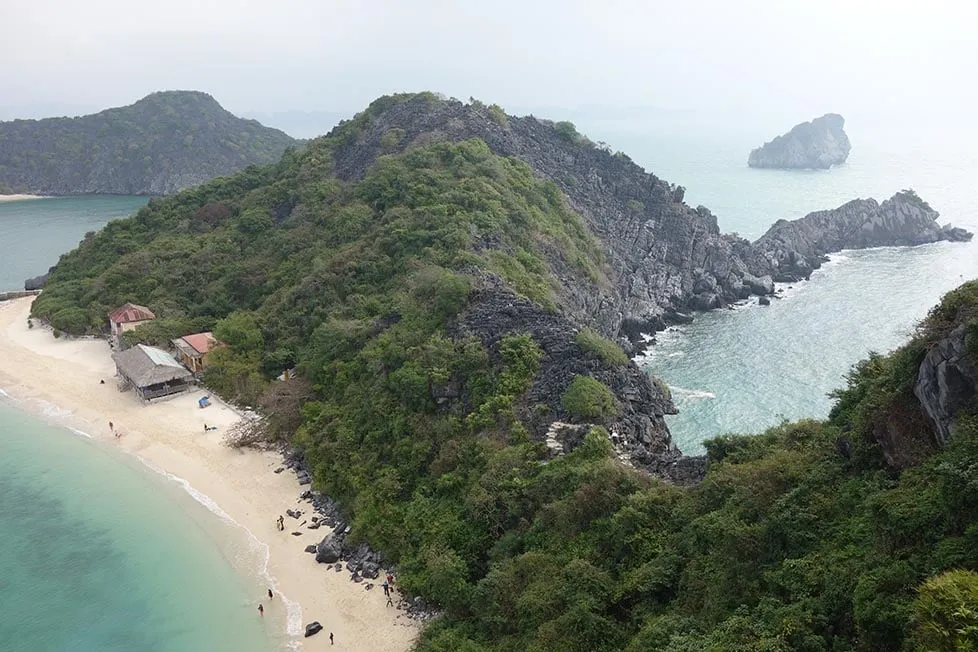 A panoramic view of limestone islands and a boat in Ha Long Bay, Vietnam.The view over monkey island!
A panoramic view of limestone islands and a boat in Ha Long Bay, Vietnam.The view over monkey island!
A journey to Vietnam is incomplete without visiting Ha Long Bay. Cruise through the breathtaking landscape of towering limestone karsts. On a hot day, dive off the boat into the tranquil water and swim to your heart’s content.
Book Your Halong Bay Cruise Here
2. Squeeze into the Cu Chi Tunnels
Gain insight into the underground tactics used by the Vietnamese during the war. Test your courage and navigate the narrow, restored sections of the Cu Chi Tunnels, trying to imagine the experience of the soldiers back in 1954.
3. Go trekking in Sapa
Sa Pa is an enchanting place to do a trekking tour
Escape the urban hustle and explore Asia’s stunning mountainous landscapes. Sapa is a dream for trekkers, home to Vietnam’s highest peak, Fansipan (3,143m). If a major climb isn’t your goal, enjoy day walks or simply relax and soak in the incredible views.
4. Try Egg Coffee
Vietnam’s coffee culture is extraordinary – you absolutely must dive into it! Sample various coffee delights and even learn how to make the beloved egg coffee, a unique and delicious local specialty.
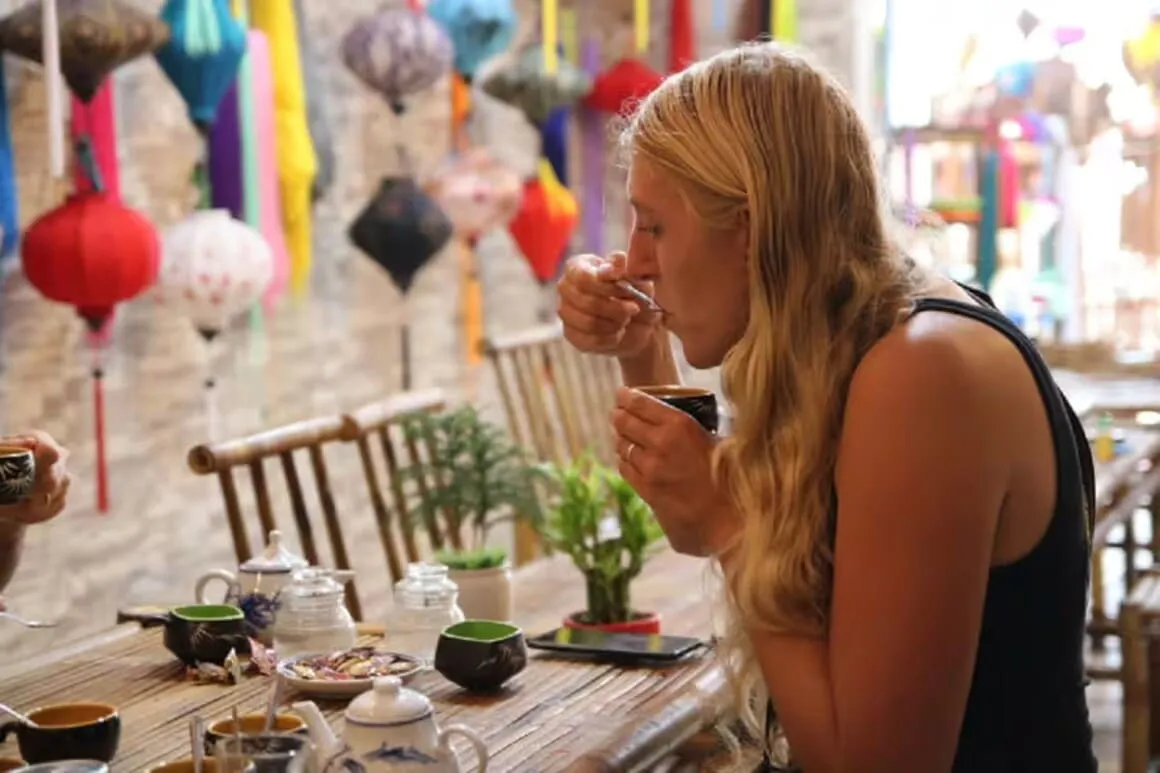 A cup of traditional Vietnamese egg coffee with a spoon.
A cup of traditional Vietnamese egg coffee with a spoon.
5. Suit up in Hoi An
While Thailand has Elephant Pants, Vietnam boasts incredible silk suits and other tailored clothing. Witness the skill of Hoi An’s tailors and get custom-made garments crafted quickly, beautifully, and affordably.
6. Motor Bike across the Country
This is an incredible way to see the diverse Vietnamese countryside. More details on exploring Vietnam on two wheels can be found in the dedicated section below.
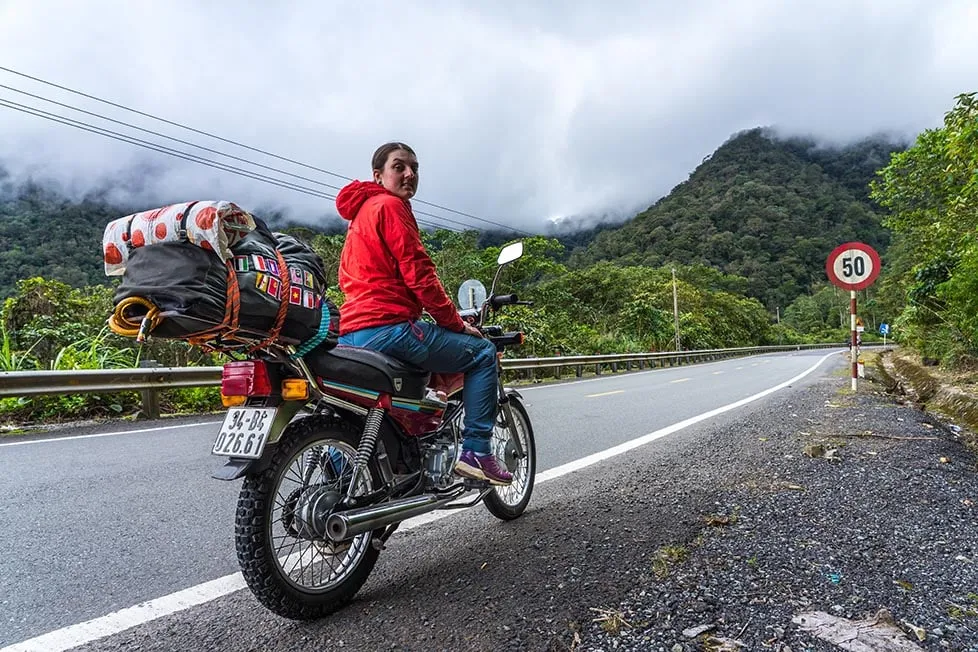 A motorbike parked on a mountain road overlooking misty valleys in the Vietnamese highlands, a highlight for adventurous backpackers.Motorbiking Vietnam is one of the best things I’ve ever done
A motorbike parked on a mountain road overlooking misty valleys in the Vietnamese highlands, a highlight for adventurous backpackers.Motorbiking Vietnam is one of the best things I’ve ever done
7. Water Puppet Show
Dating back to the 11th Century in the villages of the Red River Delta, Water Puppet Shows are a fascinating traditional art form. These unique performances, sometimes lasting for hours, are a cultural highlight you shouldn’t miss when traveling in Vietnam.
8. Bar Hop Ba Hoi
Explore the friendly bars, often found up seemingly inconspicuous side streets. These spots offer cheap beer, a laid-back atmosphere, and welcoming locals – perfect for relaxed evenings and good company.
9. Go on a street food tour
With amazing meals available for as little as $1, there’s no reason not to indulge in local delicacies. From the classic Banh Mi and adventurous fetal duck eggs to rich pho and diverse beef dishes, Vietnam is a culinary paradise. It truly has some of the finest street food in Southeast Asia.
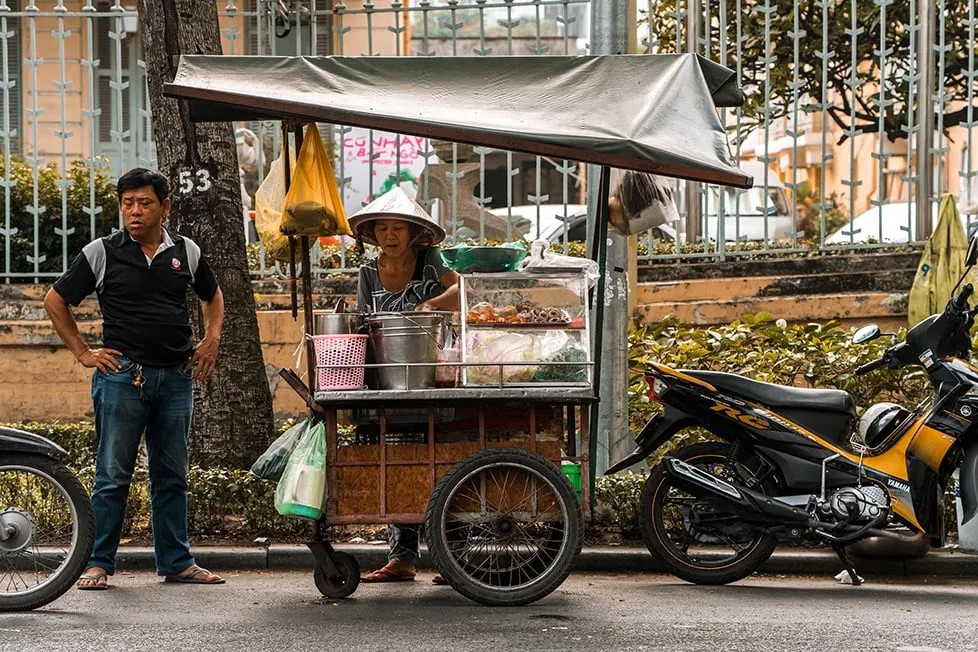 A Vietnamese woman preparing food at a street food stall.There’s plenty of street food available at all times!
A Vietnamese woman preparing food at a street food stall.There’s plenty of street food available at all times!
Backpacker Accommodation in Vietnam
Vietnam offers some of the cheapest accommodation in Southeast Asia. You can find a dorm bed for as little as $3 USD per night or a private room with a fan for around $7 USD.
The hostel scene is vibrant and varied, featuring everything from lively party hostels and co-working spaces to more traditional, laid-back options. Hostels are fantastic places to meet fellow travelers, share stories, and get tips for your next destination.
If hostels aren’t your preference, or you want a break, Vietnam also has great Airbnb options. You can rent entire apartments for less than $50 per night, a welcome change if you need some privacy after hearing one too many wild travel tales. Even luxury Airbnbs are often within reach for a solo backpacker in Vietnam looking to splurge for a night.
Between hostels and Airbnbs, you’ll find numerous guesthouses and homestays. Many of these aren’t listed online but are well-known through word-of-mouth recommendations. No matter your preference, accommodation in Vietnam is affordable and contributes to a great travel experience.
Find a Hostel in Vietnam HERE!
The Best Places to Stay in Vietnam
| Destination | Why Visit! | Best Hostel | Best Private Stay |
|---|---|---|---|
| Hanoi | Hanoi is the bubbling metropolis that has everyone falling in love with Vietnam! Come for the pho, stay for the loveable chaos. | Little Charm Hanoi | Garden house |
| Sapa | Sapa still feels like the old Vietnam – the one of rolling rice paddies, moonshine, and friendly locals. It’s more than a little dreamy here! | Lustig Hostel | Sapa TT Homestay |
| Ha Giang | If you’re on your motorbike then get out to Ha Giang! It’s offbeat, beautiful, and an unforgettable experience. | Ha Giang Hostel | Be’s home & tours |
| Hue | The old imperial capital beckons you to come explore the ruins of ancient palaces and enjoy days wandering the cobblestone streets. | Chi Homestay | Tâm Homestay |
| Da Nang | Da Nang’s highlight is surely its Golden Bridge, although there is so much more to discover! A jungle city with a great food scene is always a good time. | Rom Casa Hostel Da Nang | Chaca House |
| Hoi An | Hoi An is Vietnam’s city of lights. Enjoy the slower pace of life along the river and soak up the romantic atmosphere. | Mad Monkey Hoi An | Hoi An heart lodge |
| Nha Trang | Nha Trang is an interesting must-see. From the Russian (mafia?) tourists to the delicious seafood, there’s always something to discover along Nha Trang’s coast. | Bondi Backpackers | Azura Gold Hotel & Apartment |
| Mui Ne | Mui Ne is a charming beach town with epic sand dunes. Unleash your inner child and bomb your way down the dunes as quickly as possible! | iHome Backpacker | Poolside private room |
| Da Lat | Be careful on the motorbike ride into Da Lat, but be sure to enjoy the beauty and serenity once you do get here – this kind of quiet is hard to come by in Vietnam! | Redhouse Dalat Hotel | Raon Dalat |
| Ho Chi Minh | Ah, Saigon! The hustle to Hanoi’s bustle. The beers are cheap, the music scene is thriving, and the markets are full of the best food in all of Asia. Hell yeah! | The Hideout | Urban Studio |
Vietnam Backpacking Costs
Traveling in Vietnam can be incredibly cheap, even without constantly focusing on your budget. I typically spent around $20 per day, slightly more when enjoying day trips or imported drinks. It’s entirely possible for The Broke Backpacker Vietnam to travel comfortably on less than $10 a day while still having fantastic experiences.
As I’ve hopefully made clear, Vietnamese food is a major highlight! It’s not just delicious; it’s also incredibly kind to your wallet. Spending just $3 on a meal in Vietnam will leave you completely satisfied with both quantity and amazing flavor.
A local beer costs around 80 cents, though imported options are pricier. A night out with music or drinks in a bar can be enjoyed for less than $10, even with generous consumption! Generally, the further you move from the major city centers, the cheaper expenses become.
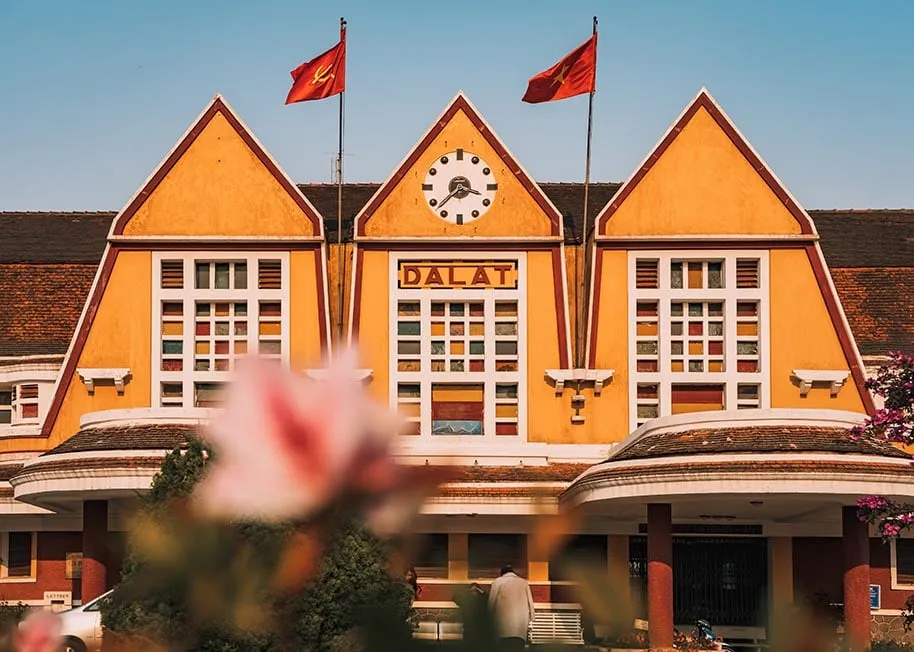 The historic train station building in Da Lat, Vietnam.Da Lat train station is just for show these days!
The historic train station building in Da Lat, Vietnam.Da Lat train station is just for show these days!
A Daily Budget in Vietnam
| Expense | Broke Backpacker | Frugal Traveler | Creature of Comfort |
|---|---|---|---|
| Accommodation | $3-$7 | $7-$14 | $15+ |
| Food | $3-$8 | $9-$15 | $20+ |
| Transport | $2-$5 | $5-$10 | $15+ |
| Nightlife Delights | $1-$4 | $5-$9 | $10+ |
| Activities | $0-$10 | $11-$19 | $20+ |
| Total per day: | $9-$34 | $37-$67 | $80+ |
Money in Vietnam
Ever wanted to toss money in the air and feel like a millionaire? The Vietnamese Dong offers this sensation! Every The Broke Backpacker Vietnam gets to feel rich here. Use an up-to-date currency converter to understand the current exchange rate.
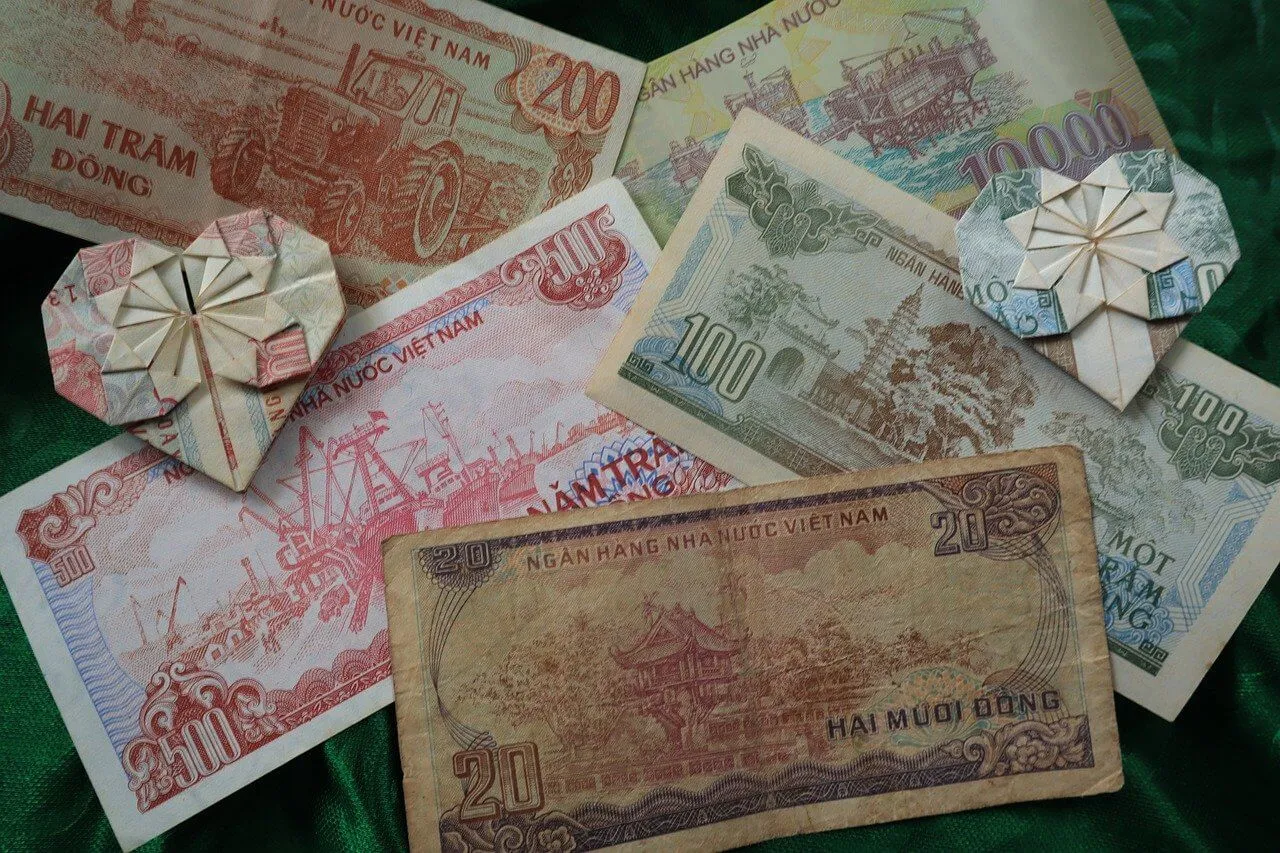 Vietnamese Dong banknotes, showing the local currency.Stop flashing your Dong around!
Vietnamese Dong banknotes, showing the local currency.Stop flashing your Dong around!
Don’t bother trying to get Vietnamese currency before you arrive; it’s difficult, and you’ll likely get a poor exchange rate. Bring US dollars instead, as many shops and services in larger areas accept them. Credit and debit cards are widely accepted in cities like Ho Chi Minh and Hanoi, but beware of high withdrawal fees at ATMs. It’s better to withdraw a larger sum at once and store it securely.
For managing finances on the road, I highly recommend Wise. It’s an excellent platform for holding funds, transferring money, and paying for things, offering lower fees than traditional banks.
Travel Tips – Vietnam on a Budget
Vietnam is one of Asia’s most affordable destinations. However, it’s still possible to overspend, especially with the currency making you feel wealthy. Beyond standard budget backpacking tips, here are my top tips for backpacking Vietnam affordably:
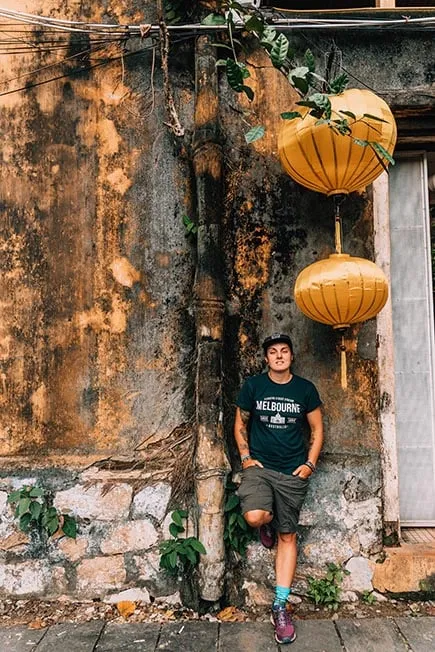 Colorful lanterns decorating streets in Hoi An, Vietnam at night.Hanging out in Hoi An
Colorful lanterns decorating streets in Hoi An, Vietnam at night.Hanging out in Hoi An
- Camp: Vietnam’s countryside and coastline are incredible, offering views too good to miss. Camping is popular in national parks. Pack your best backpacking gear and enjoy sleeping under the stars.
- Take the Bus: The national bus service, sometimes called the ‘chicken bus’, has extensive routes even to remote areas. For as little as $1 a ticket, sharing a ride with luggage (or live chickens) is a small price for budget travel.
- Eat Street Food: Seriously, it’s unbelievably cheap and delicious! Cooking for yourself won’t save much when you can get a filling meal for $2. Plus, you can’t replicate the flavors of local grandmas cooking their specialties.
- Understand the Money: If math isn’t your strong suit, use a currency app to keep track of your spending and avoid being overcharged. Knowing the value helps immensely.
- Couchsurf: Connect with locals and get a free place to stay using Couchsurfing. It’s a great way to make friends and gain insider tips.
- Keep it Local: Drink local beer, eat local food, and use local companies for tours. Haggling is easier with local operators, and supporting local businesses is a rewarding way to travel.
- Hitchhike: While I didn’t hitchhike personally, friends have successfully traveled the length of the country this way. Getting around by hitchhiking is a free way to travel, meet people, and stay flexible.
- Budget-friendly Tours: If you opt for tours, consider options that allow installment payments. Global Work and Travel offers such plans, perfect for backpackers managing their funds.
Why Should You Travel to Vietnam with a Water Bottle?
Reducing plastic consumption is one of the easiest and most impactful things you can do as a responsible traveler. Avoid single-use plastic bottles, bags, and straws. These items often end up polluting beautiful places, including beaches.
A great solution is investing in a premium filtered travel bottle like the Grayl Geopress. You can safely filter various water sources, save money on bottled water, and feel good knowing you’re reducing plastic waste.
And Speaking of Plastic… Get an eSIM For Vietnam
Forget those tiny plastic SIM cards! These days, wherever you travel, an eSIM is the easiest way to stay connected from the moment you arrive. You can download an eSIM before leaving home and activate it immediately upon landing.
This saves you the hassle of finding local providers at the airport and figuring out confusing local plans. Among many eSIM providers, Jetpac is a great option. Jetpac works like an app: download, pick your plan, and you’re connected instantly.
JetPac eSim Packages For Vietnam
- 1GB – 4 Days – $1
- 5GB – 30 Days $12
- 10GB – 30 Days – $22
Best Time to Travel to Vietnam
Vietnam’s weather varies significantly across its regions, from monsoons to cold snaps and hot, humid periods. Catching consistently good weather across the entire country can be tricky. However, it’s possible to find ideal windows for backpacking Vietnam from north to south.
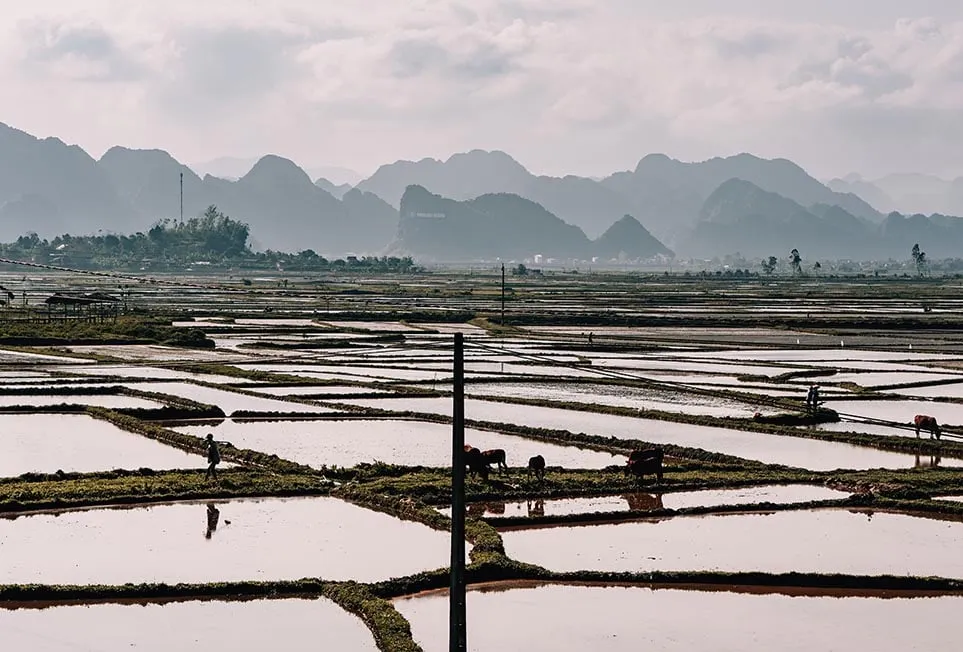 Limestone karsts shrouded in mist in Phong Nha, Vietnam, suggesting unpredictable weather.The weather in Phong Nha is unpredictable
Limestone karsts shrouded in mist in Phong Nha, Vietnam, suggesting unpredictable weather.The weather in Phong Nha is unpredictable
Generally, the best times to backpack Vietnam top-to-bottom are September to December (Autumn) and March to April (Spring). These periods offer the highest chance of experiencing dry, sunny weather throughout the country.
For more specific guidance by region:
- North Vietnam: October to May typically brings dry weather. Expect colder temperatures in the mountains, with more rain and humidity increasing from March onwards.
- Central Vietnam: February to July is the best period to avoid heavy rain. Temperatures can reach the upper 30s Celsius from June to August.
- Southern Vietnam: December to April is the ‘dry’ season. Temperatures rarely drop below 20 degrees Celsius and can climb to 40 degrees in March/April.
What to Pack for Vietnam
Make sure your packing for Vietnam is sorted! On every adventure, there are 6 things I never travel without:
| Product | Description |
|---|---|
 EarplugsEar Plugs EarplugsEar Plugs |
Snoring dorm-mates can ruin your nights rest and seriously damage the hostel experience. This is why I always travel with a pack of decent ear plugs. |
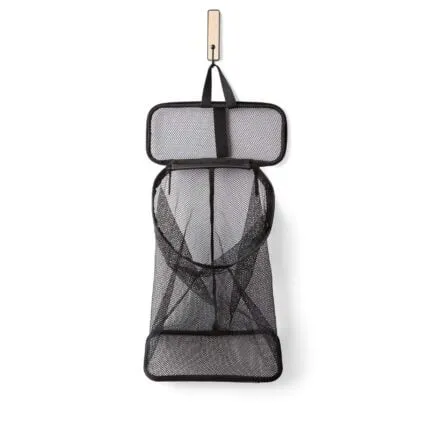 nomatic_laundry_bagHanging Laundry Bag nomatic_laundry_bagHanging Laundry Bag |
Trust us, this is an absolute game changer. Super compact, a hanging mesh laundry bag stops your dirty clothes from stinking, you don’t know how much you need one of these… so just get it, thank us later. |
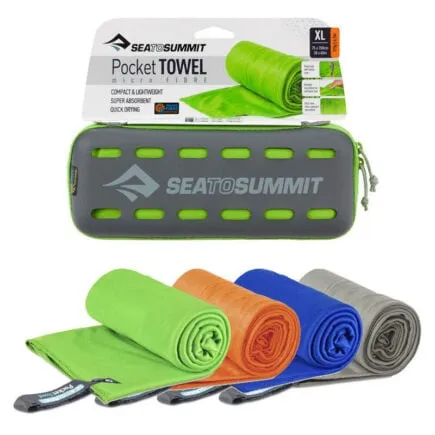 sea to summit towelSea To Summit Micro Towel sea to summit towelSea To Summit Micro Towel |
Hostel towels are scummy and take forever to dry. Microfibre towels dry quickly, are compact, lightweight, and can be used as a blanket or yoga mat if need be. |
 Monopoly Card GameMonopoly Deal Monopoly Card GameMonopoly Deal |
Forget about Poker! Monopoly Deal is the single best travel card game that we have ever played. Works with 2-5 players and guarantees happy days. |
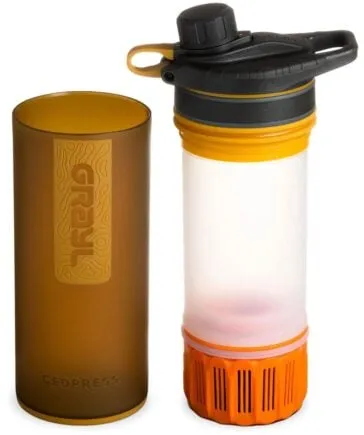 Grayl GeoPress Water Filter and Purifier BottleGrayl Geopress Water Bottle Grayl GeoPress Water Filter and Purifier BottleGrayl Geopress Water Bottle |
Always travel with a water bottle! They save you money and reduce your plastic footprint on our planet. The Grayl Geopress acts as a purifier AND temperature regulator. Boom! |
With these essentials, I still make sure to do a rundown of my full backpacking packing list.
Staying Safe in Vietnam
Vietnam is extremely safe for travel. Violent crime is rare, and while petty crime like pickpocketing can occur in cities, it’s not rampant. The main area where backpackers need to exercise caution is when riding a motorbike.
Vietnamese cities have chaotic traffic, and rural roads can be winding and unpredictable, with animals and people often on them. While motorbiking is a quintessential Vietnam experience, I don’t recommend it for beginners without significant prior riding experience.
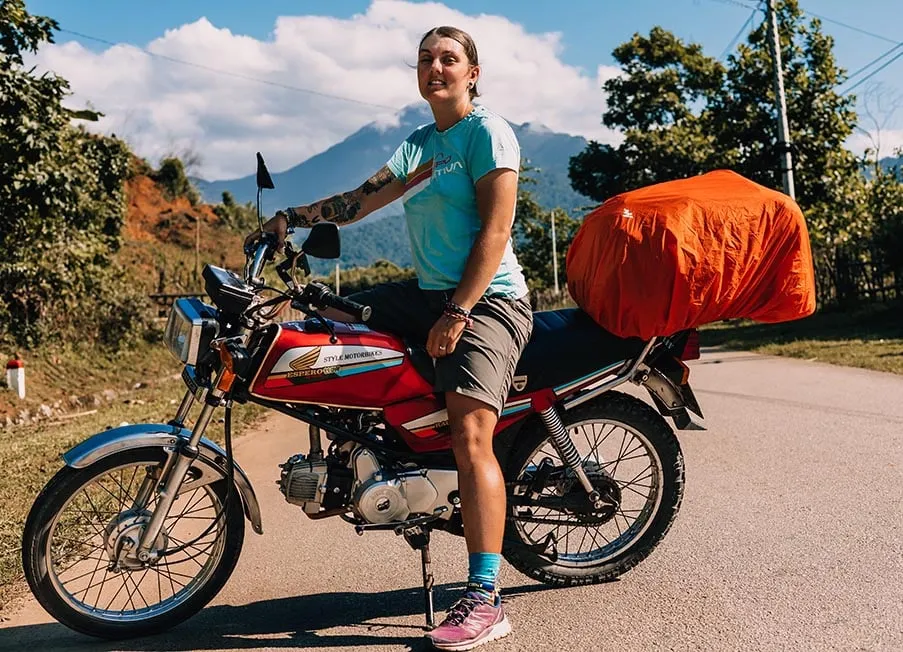 A person wearing a helmet and riding a motorbike on a road in Vietnam, emphasizing safety.I just loved exploring the country on a motorbike
A person wearing a helmet and riding a motorbike on a road in Vietnam, emphasizing safety.I just loved exploring the country on a motorbike
In dense areas and tourist spots, keep an eye on your belongings. Aside from road safety and minor petty theft risks, Vietnam is a very relaxed and safe country to travel in compared to many other parts of the world, including Southeast Asia. Follow standard advice for safe travel and you’ll be fine.
Sex, Drugs, and Rock ‘n’ Roll in Vietnam
Penalties for drug offenses are severe in Vietnam, similar to other neighboring countries. While weed is present, getting caught with it can lead to serious trouble.
Let’s be realistic: some travelers do experiment with drugs on the road. In Vietnam, there are underground scenes, particularly among younger locals, so having local connections can be helpful if you’re looking for a joint. However, I strongly advise against carrying anything illegal between cities or regions. It’s best to inquire locally upon arrival.
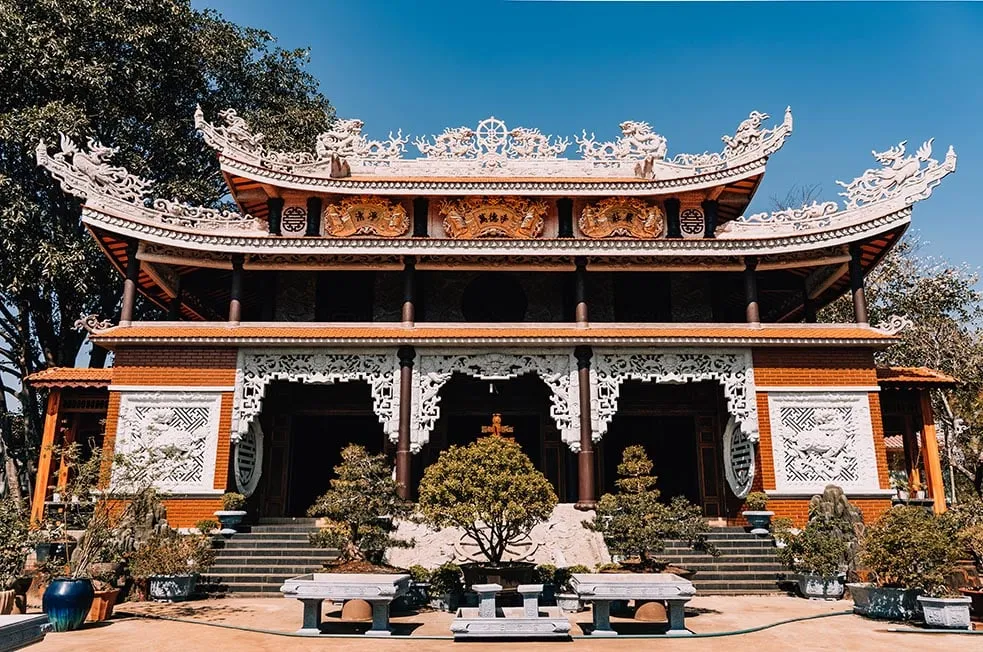 An ornate multi-tiered temple structure in Vietnam.The temples of Vietnam are unique and super ornate
An ornate multi-tiered temple structure in Vietnam.The temples of Vietnam are unique and super ornate
As for sex, well, you’re a backpacker! Casual encounters are part of the travel scene, whether it’s with fellow travelers in a hostel or perhaps a connection with a local.
Through it all, remember to be respectful and ethical. “Free love” should still be about genuine connection and respect.
It’s also important to address ‘sex tourism’. The affordability of services in Asia has led to an industry that can be ethically complex. Regardless of your personal views on sex work, always treat other human beings with respect. There’s no need to contribute to negativity in the world.
Travel Insurance for Vietnam
Adventures, especially backpacking ones, can sometimes involve unexpected situations. This is why having travel insurance is crucial.
ALWAYS sort out your backpacker insurance before your trip. There’s plenty to choose from in that department, but a good place to start is Safety Wing.
They offer month-to-month payments, no lock-in contracts, and require absolutely no itineraries: that’s the exact kind of insurance long-term travellers and digital nomads need.
SafetyWing is cheap, easy, and admin-free: just sign up lickety-split so you can get back to it!
Click the button below to learn more about SafetyWing’s setup or read our insider review for the full tasty scoop.
View on Safety Wing Or Read Our Review!
How to Get Into Vietnam
Vietnam is easily accessible within Southeast Asia. Whether you’re doing a grand loop of the region, arriving from China by land, or flying directly, border crossings and visa procedures are relatively straightforward these days. The era of tricky Vietnamese visas is largely over.
Long-distance bus and train services connect major cities like Bangkok to Ho Chi Minh City. For the truly adventurous, you could even travel by train all the way from Europe to Vietnam.
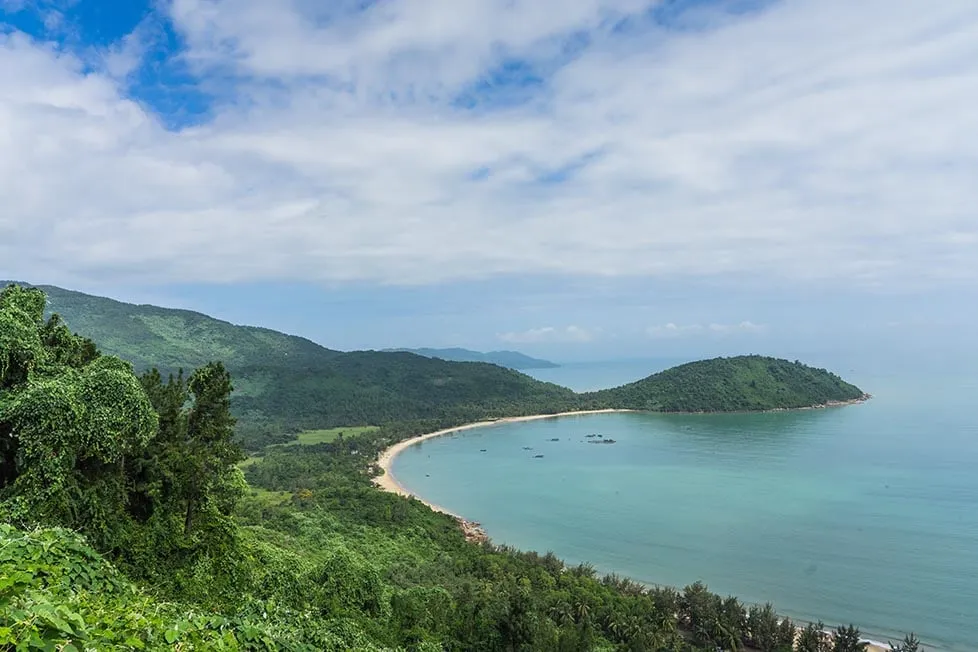 A scenic view of the Vietnamese coastline with lush green mountains meeting the sea.You can’t wait to get here!!
A scenic view of the Vietnamese coastline with lush green mountains meeting the sea.You can’t wait to get here!!
For The Broke Backpacker Vietnam with limited time, flying is the quickest entry method. Ho Chi Minh City is a major international gateway, with flights from airlines like Emirates, Air China, and Vietnam Airlines. While Saigon receives the most flights, other cities also have international connections.
You can enter Vietnam by motorbike if you have the correct paperwork. Crossing from Cambodia into Vietnam by local bus is also common and relatively simple. VIP bus services are available for those seeking more comfort.
Entry Requirements for Vietnam
Most nationalities require a visa for Vietnam, though there are exceptions for short stays depending on your country. For longer visits, a 30-day Vietnam e-visa is typically needed.
Fortunately, e-visas are generally easy to arrange online before your trip. If you prefer assistance, many companies offer visa application services. If your 30-day stay feels too short, extensions are possible once you are in Vietnam.
How to Get Around Vietnam
Vietnam has comfortable long-distance transport options and improving road quality, making travel within the country relatively smooth. A major coastal train line runs from Ho Chi Minh City north to the Chinese border, offering a scenic way to travel and easy connections onwards to China.
The most popular transport for The Broke Backpacker Vietnam is the bus network. Buses are cheap, often offer hop-on/hop-off tickets, and increasingly have air conditioning. They are ideal for budget travel.
Vietnam Railways operates a single-track network along the coast. While sometimes slow due to dating back to the colonial era, this is part of its charm. It provides beautiful views of the countryside and coast. Book tickets in advance, especially for popular routes or sleeper classes. Hard sleeper class offers good value. Note that ‘through tickets’ might not allow stops; you may need separate tickets to break up the journey. The Reunification Express offers a particularly scenic experience.
While I didn’t use domestic flights within Vietnam, they are an option if time is short. A 2-hour flight from Ho Chi Minh to Hanoi is significantly faster than a 30+ hour train journey. Vietnam Airlines and Jetstar offer reasonably priced flights to many destinations.
Taxis are common in cities. Ensure you use a metered taxi or agree on the price beforehand. Vietnamese taxi drivers can sometimes take longer routes or try to steer you towards specific hotels. Be firm with your destination.
To avoid showing up at stations hoping for a spot, you can book tickets in advance for most of Southeast Asia using Bookaway.
Travelling by Motorbike in Vietnam
To truly elevate your backpacking adventure, consider getting a motorbike. Traveling by motorbike across Vietnam is often more cost-effective than buying numerous train or bus tickets and offers incredible freedom to explore off the main routes, seeking out genuine adventures. Plus, it’s a great way to avoid crowded buses with rowdy travelers.
I bought a second-hand Honda Win Manual Motorbike from another backpacker in Ho Chi Minh City for around $300. For the few weeks I had it, it only required minor repairs. Before this trip, I had never ridden a motorbike and was quite intimidated. However, I found it easier than expected. After about an hour of practice (which was quite amusing to watch!), I was ready to go.
 A person wearing a helmet and riding a motorbike on a road in Vietnam, emphasizing safety.I just loved exploring the country on a motorbike
A person wearing a helmet and riding a motorbike on a road in Vietnam, emphasizing safety.I just loved exploring the country on a motorbike
Contrary to my expectations of rough dirt tracks, most roads were surprisingly decent, with only occasional potholes. The biggest risks are distractions, other drivers, and obstacles like animals or pedestrians. Ensure your travel insurance explicitly covers motorbiking in Vietnam.
Unfortunately, accidents involving travelers are common. I had a crash myself in Dalat, resulting in cuts and bruises. The bike flipped and hit my head, and my helmet almost certainly saved me – always wear a helmet.
If you want to save money on accommodation, consider getting a small tent. I would often arrive at a restaurant for dinner, politely ask if I could camp nearby for the night, and was almost always granted permission without being charged.
Onwards Travel From Vietnam
Vietnam’s location makes it a convenient hub for overland travel to neighboring countries. You can easily travel by bus, motorbike, or even hitchhike across the borders to Cambodia, Laos, and China. There are also cheap flights available to destinations like Thailand and Malaysia if you want to continue exploring Southeast Asia.
If your budget is running low, consider flying to Australia or New Zealand, known for higher minimum wages, to replenish funds. The options for onwards travel from Vietnam are plentiful.
Where to travel onwards from Vietnam? Try these countries out!
Working in Vietnam
Yes, absolutely! Many of my long-term traveling friends have spent time working in Vietnam to boost their funds. It’s a common and viable option for The Broke Backpacker Vietnam.
To work legally, you will need a work permit. These are typically valid for up to 2 years (non-renewable). The responsibility for obtaining the permit usually falls on your prospective employer, who will need to sponsor you.
Vietnam is also emerging as a popular digital nomad destination. It boasts fast internet, a growing expat community, and incredibly low living costs. It’s hard to find many other places where you can get lunch for $2 and a beer for 80 cents while working online with reliable, high-speed internet.
Teaching English in Vietnam
Teaching English in Vietnam is one of the most common ways for foreigners to find work. With relevant qualifications, such as a TEFL certificate, numerous opportunities open up, often with decent wages by Asian standards.
A TEFL certificate broadens your horizons, allowing you to find teaching work globally. Broke Backpacker readers can get a 50% discount on TEFL courses through MyTEFL using the code PACK50.
You’ll need an employer to sponsor you and offer a contract to secure a work permit. With these in place, an expat lifestyle in Vietnam awaits. Many schools and language centers in major cities like Hanoi and Ho Chi Minh are always looking for fluent English speakers. Teaching opportunities extend to adults as well. While major cities offer the most jobs and modern amenities, venturing into villages and rural areas can provide a more authentic experience for teaching English abroad.
Volunteering in Vietnam
Volunteering abroad is a fantastic way to immerse yourself in a culture while contributing to the local community. Vietnam offers various volunteer projects, including teaching, construction, agriculture, and more.
If a traditional job isn’t your focus, volunteering is an excellent alternative. It helps reduce travel costs, facilitates connections with local communities, and allows you to contribute positively. Reputable work exchange platforms like Worldpackers and Workaway can help you find opportunities, though it’s always wise to research individual projects thoroughly.
Culture in Vietnam
Despite being one of Southeast Asia’s most populated countries (second only to Indonesia), Vietnam is remarkably ethnically homogeneous, with the Vietnamese people making up about 85% of the population. The remaining population consists of diverse minority ethnic groups, each with unique customs and traditions.
As a communist country, Vietnam has no state religion, and atheism is widespread. However, the majority of Vietnamese people follow folk traditions or practice Buddhism and Catholicism. Across these beliefs, strong emphasis is placed on family ties and ancestor worship.
Once you build a connection with Vietnamese people, you’ll likely find yourself laughing constantly. They have a wonderful sense of humor, often a witty, sarcastic kind that points out life’s randomness.
 Children playing and smiling in a village in Vietnam.The kids in Vietnam are mega cute!
Children playing and smiling in a village in Vietnam.The kids in Vietnam are mega cute!
It’s best to start friendships with respect, as people value saving face. But once you’re in a relaxed setting, perhaps after sharing some rice wine, the playful banter can flow! This humor might stem partly from navigating a history marked by conflict and then adapting to communist society.
I recall a street food adventure with a Vietnamese friend where we constantly joked about things that only made sense in Vietnam, like a couple wearing matching pajamas in a fancy coffee shop. She also found it incredibly funny that people would take selfies with me just because I have blue eyes, promptly dubbing me “Miss America” despite my Australian nationality!
Useful Travel Phrases for Vietnam
Learning a few basic phrases in the local language is always beneficial for travel, helping you connect with people. At the very least, give it a try!
In my first days in Vietnam, the only word I consistently remembered was “sorry” – xin loi. This proved useful as I found myself saying it often while navigating the dense motorbike traffic of Ho Chi Minh City.
Fortunately, Vietnamese people are incredibly gracious and good-humored. They rarely seemed bothered by my clumsiness and were often amused by the little white foreigner repeatedly apologizing!
- Hello – Xin Chao
- Goodbye – Tam biet
- Thank You – Cám on Ban
- No Problem – Khong Van De Gi
- I like to Eat – Toi Muon An
- What is this? – cái si te nài?
- I am Sorry – Toi Sin Loi
- No plastic bag – Không có túi nh?a
- No straw please – Không có r?m, xin vui lòng
- No plastic cutlery please – Không có dao nh?a xin vui lòng
- I’m Hungry – Tôi Doi
- What is your name? – Tên cua ban là si
- I don’t understand – Toi khong hieu
What to Eat in Vietnam
Vietnamese food is globally celebrated, and you’ve likely already tried iconic dishes like fresh spring rolls or noodle soup.
The Vietnamese possess an incredible ability to transform simple ingredients into mouthwatering culinary creations. Beyond being delicious, Vietnamese food is remarkably healthy, typically prepared with fresh vegetables, herbs, and rice or noodles. Each dish offers a distinct and wonderful flavor profile.
One must also acknowledge the French influence, a subtle but sometimes significant addition from the colonial era, which elevates certain dishes. The fusion creates undeniably tantalizing flavors.
Yes, for many, the food is the absolute best reason to backpack Vietnam!
 A close-up of a delicious Vietnamese Banh Mi sandwich.Bahn Mi for life yo!
A close-up of a delicious Vietnamese Banh Mi sandwich.Bahn Mi for life yo!
I vividly recall sitting in a tiny alley in Hue, the old imperial capital, sweating in the heat. I decided the best remedy was something equally intense and ordered Bun Bo Hue, a dish that became the most memorable meal of my Southeast Asia trip.
While I don’t subscribe to organized religion, experiencing such divine flavors almost makes you wonder how they exist!
While in Vietnam, seize every opportunity to eat out. It’s cheap, delicious, and will quickly show you why global fast-food chains haven’t truly taken hold here.
Popular Vietnamese Dishes
- Buncha – A personal favorite! Essentially a pork meatball noodle salad, incredibly flavorful and satisfying.
- Goi Cuon – The famous Vietnamese “Summer Rolls”. A light and refreshing bite, usually filled with shrimp or pork, fresh herbs, and vegetables, wrapped in delicate rice paper and served with a peanut dipping sauce.
- Pho – Vietnam’s iconic noodle soup. Available in many variations, it’s a comforting and accessible dish perfect for newcomers to Vietnamese cuisine.
- Banh Mi Thit – Arguably the best sandwich in Asia! A perfectly crusty baguette generously filled with savory ingredients like ham, pate, pickles, herbs, and often grilled meats.
Brief History of Vietnam
People have inhabited Vietnam for thousands of years, making it one of the earliest centers for rice cultivation. Throughout history, various dynasties ruled over parts or all of a unified Vietnam, coexisting with numerous indigenous groups who maintained their distinct identities.
China frequently invaded and periodically ruled Vietnam, but various Vietnamese dynasties resisted and regained independence. The Mongol invasions were also repelled. However, the arrival of the French in the 19th century marked a new challenge for a unified Vietnam determined not to become another foreign colony.
During WWII, Japan occupied French Indo-China while France was weakened. The Vietnamese Communists, led by Ho Chi Minh, fought against the Japanese and gained control of parts of North Vietnam by 1945. They declared Vietnam independent, but France refused to recognize this, leading to war.
After a prolonged conflict, culminating in the 57-day siege of Dien Bien Phu, the French were defeated and forced to withdraw in 1954. Vietnam was divided: Ho Chi Minh established a Communist regime in the North, while Ngo Dinh Diem became ruler in the South.
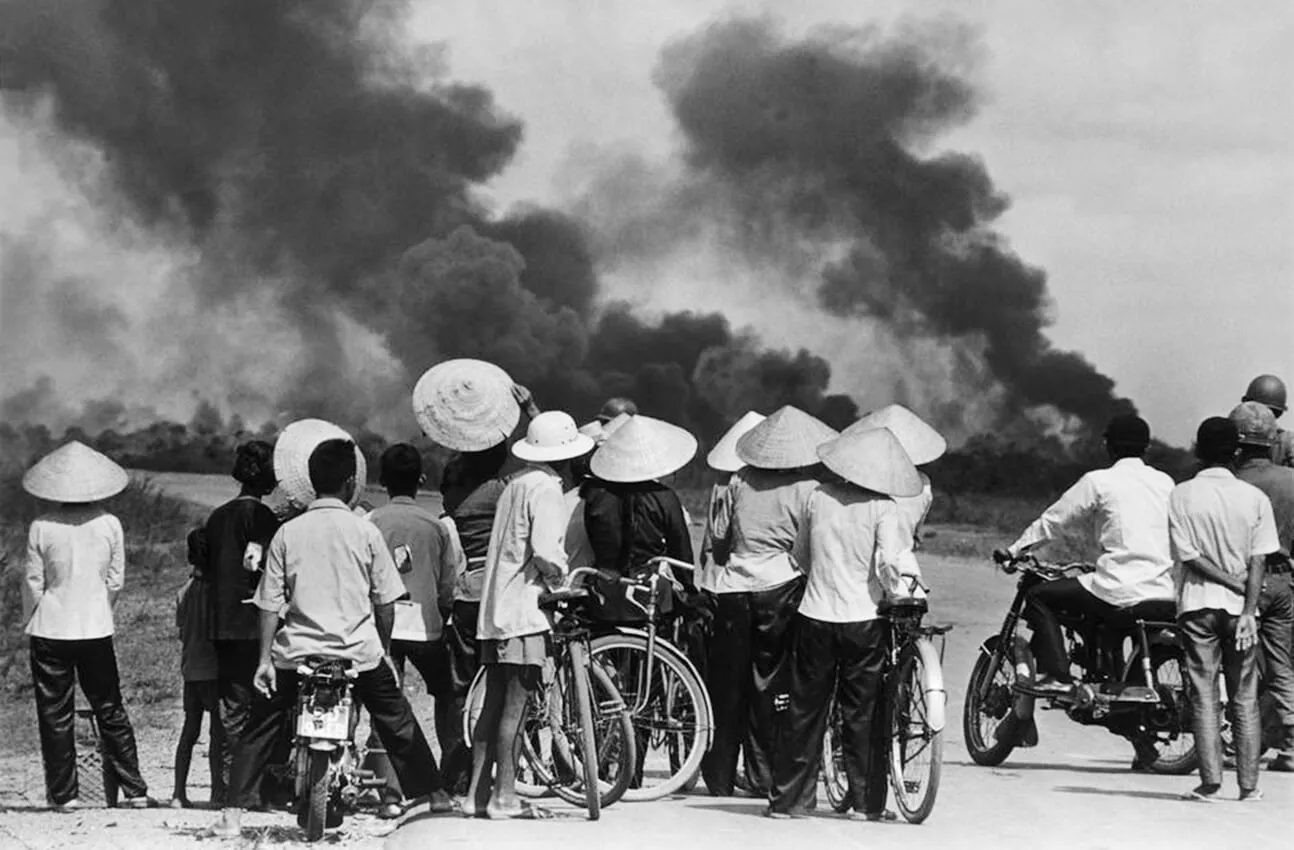 An old photograph showing damaged buildings during the Vietnam War.The Vietnam War, 1972, AKA The Resistance War Against America. Photo: dronepicr (Flickr)
An old photograph showing damaged buildings during the Vietnam War.The Vietnam War, 1972, AKA The Resistance War Against America. Photo: dronepicr (Flickr)
The United States became increasingly involved during the Cold War, initially sending military advisors and providing financial support to the French, and later the South Vietnamese government. Following alleged attacks on US ships in the Gulf of Tonkin in 1964, the US bombed North Vietnam, and Congress passed a resolution granting the president broad authority to respond.
By December 1965, the US had 183,000 soldiers in Vietnam, a number that grew to nearly half a million by the end of 1967. Despite this, the Viet Cong effectively waged a guerrilla war. US forces withdrew in 1973, but the conflict continued until North Vietnamese forces captured Saigon in 1975, leading to the reunification of Vietnam under Communist rule.
FAQs About Backpacking Vietnam
Every first-time The Broke Backpacker Vietnam likely has a few key questions. Here are answers to some common ones:
Is Vietnam safe for backpacking?
Yes, Vietnam is considered very safe for backpackers. Violent crime against tourists is rare. Petty theft like pickpocketing can occur in busy areas, so be mindful of your valuables. The main safety concern is road travel, particularly if you’re inexperienced with the often chaotic traffic.
Where should I go backpacking in Vietnam?
A popular route follows the Ho Chi Minh Highway from north to south, including major cities like Hanoi and Ho Chi Minh City, historical Hue, and charming Hoi An. These are great starting points. For those seeking less touristy areas, consider regions near the Laos border, the northern border with China, or places like the Ha Giang Loop. Pretty much anywhere you choose offers a unique experience for The Broke Backpacker Vietnam.
What is considered rude in Vietnam?
Generally, dress modestly, especially when visiting religious sites. Show respect towards elders. Avoid beckoning someone with your palm facing upwards, as this is used for calling animals. Maintain a polite and respectful tone in interactions. While tourists are often given some leeway, demonstrating cultural awareness is always appreciated.
Is Vietnam expensive?
Not at all! Vietnam is one of the most affordable destinations in Asia. While you could spend a lot, it’s very easy to travel on a small budget. For around $10-$15 a day, you can secure comfortable accommodation, eat delicious street food for every meal, and enjoy local drinks.
What is the highlight of backpacking in Vietnam?
For many, it’s the fascinating contrast between the old and the new. Vietnam is rapidly modernizing – its internet is often better than in some Western countries, and cities boast skyscrapers and trendy cafes. Yet, side-by-side with this are timeless rice paddies, traditional markets, and a deep-rooted culture. This dynamic mix offers endless discovery and an experience that is anything but boring for The Broke Backpacker Vietnam.
Final Advice Before Visiting Vietnam
Be good to Vietnam.
This means avoiding disrespectful behaviors like littering, carving your name into historical sites, excessive public rowdiness, or participating in unethical animal tourism. While it’s fine to enjoy the nightlife and have fun, do so responsibly. Don’t become the type of traveler your mother would be ashamed of.
Go to Vietnam, have an incredible time, but always be respectful of the culture, history, and people. There are mountains to climb, cities to explore, and endless delicious food like Bun Bo Hue to savor. You are about to experience a truly special corner of the world.
As travelers, our choices impact the local communities and the experiences of those who follow. Vietnam has faced considerable challenges throughout its history. It’s up to us to help ensure it remains a beautiful and welcoming place for future visitors.
All that’s left now is to book your ticket and go try that Banh Mi!
Why stop here? Check out more ESSENTIAL backpacker content!
 A farmer working in a flooded rice paddy field in Vietnam.If you’re looking for rice paddies then Vietnam is your place!
A farmer working in a flooded rice paddy field in Vietnam.If you’re looking for rice paddies then Vietnam is your place!
